HOUSEBUILDER

GROUNDWORKS & DRAINAGE
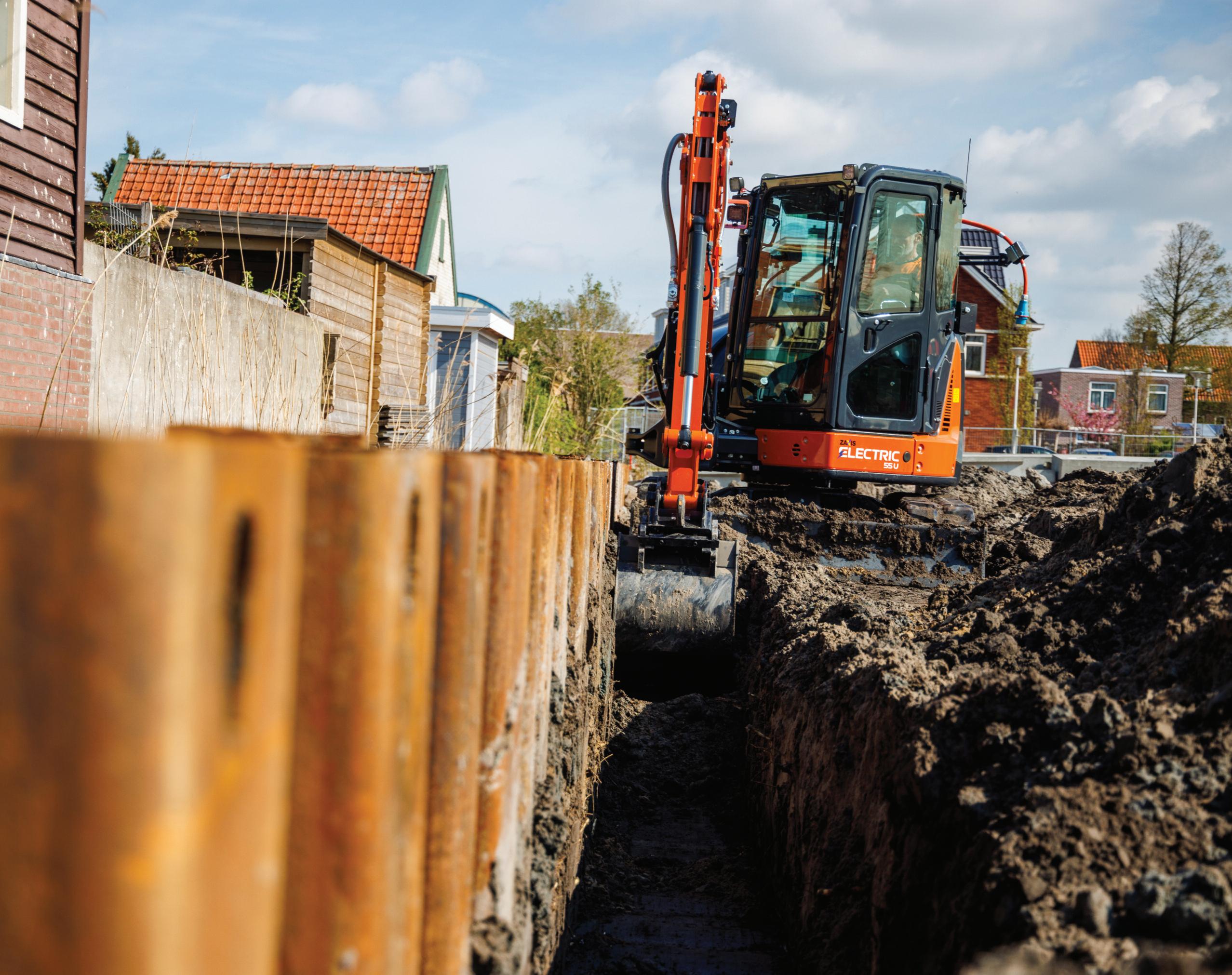
l Looking forward to Schedule 3
l Latest revision to the DCG for SuDS


SUSTAINABILITY
l MMC and lower carbon emissions


l Airtightness through breathable membranes and vapour control layers
SPECIAL REPORTS
l First Homes one year on
l Handling lenders when things go wrong










INTERIORS: THE DEATH OF DINING?

PROFESSIONAL

C O N T E N T S
GROUNDWORKS & DRAINAGE
35 A case for adoption
Changes to the Design & Construction
Guidance for SuDS give the green light to arch-shaped attenuation chambers

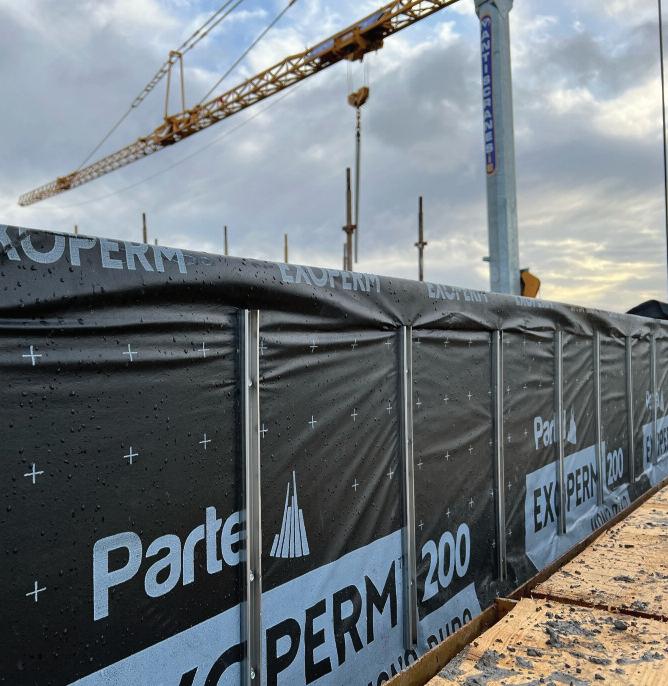
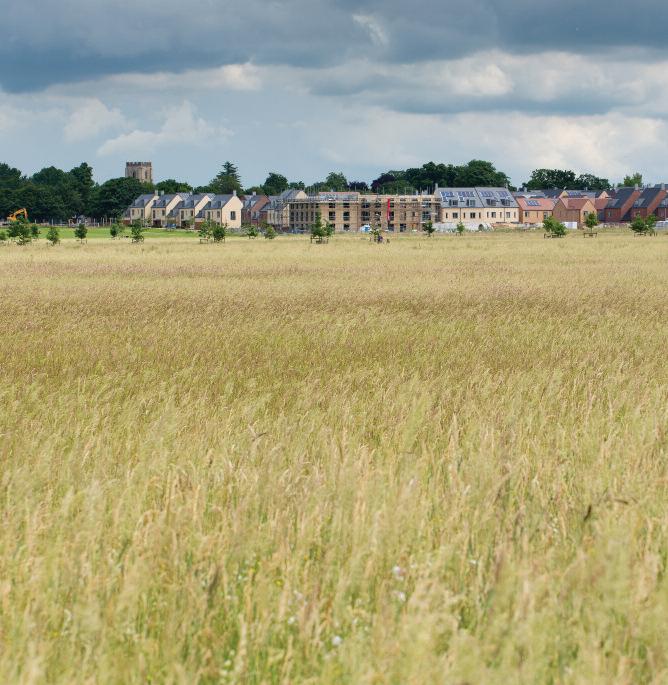
37 Block vote
How permeable paving makes a useful contribution to residential water management

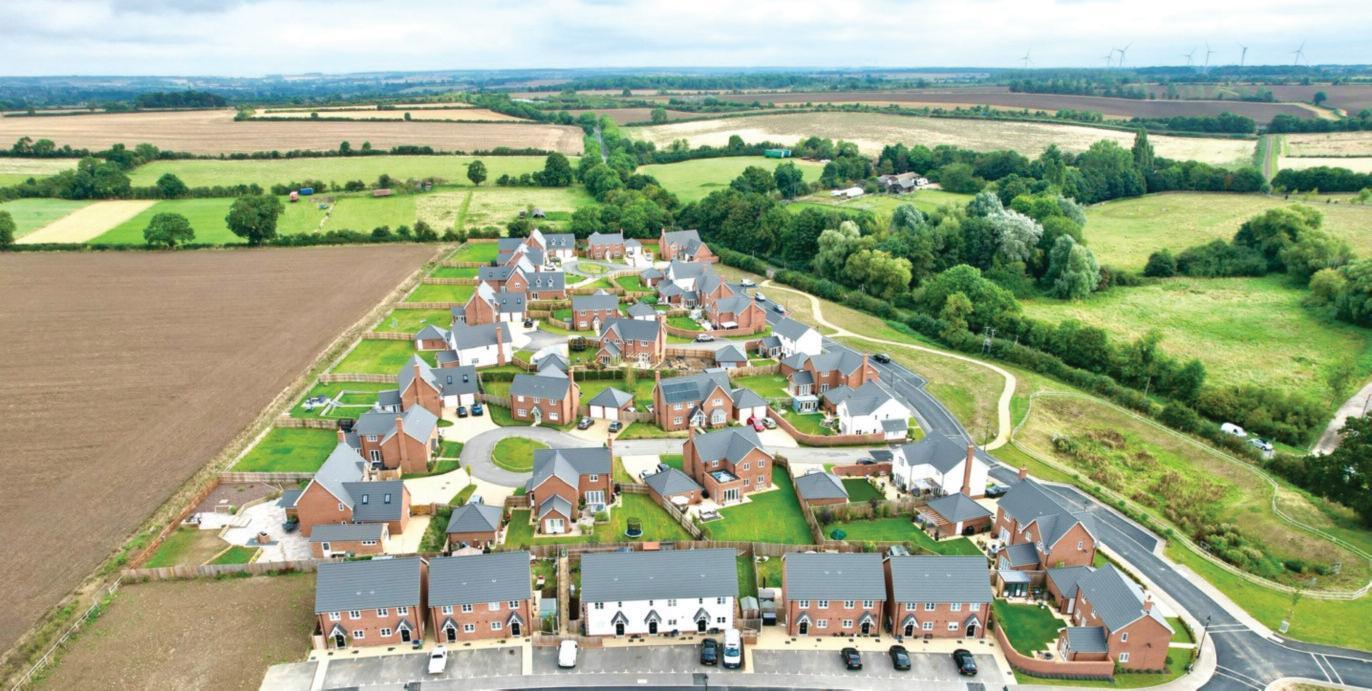
40 Three is the magic number

How to ensure your business thrives when Schedule 3 arrives.


44 A mini adventure
We take a look at the current and most recent crop of mini-excavators from some of the sector’s biggest names
PHPD APRIL/MAY 2023 VOLUME 17 NUMBER 3 18 | Offsite is the way ahead 5 First Word 6 News 8 Developments 10 BMBI Market Report 46 Kitchens & Bathrooms 49 General Building 51 Last Word 18 Speed is of the essence Cora’s MD reckons that off-site construction is the way forward to sustainable construction 21 Masonry matters
discount masonry in the search for sustainable buildings 26 Wildlife welfare
taking responsibility to minimise impact on the natural world, developers can contribute to nature’s recovery 30 Pathway to passive A material-led approach can play a significant role in achieving passive house standards 32 Biodiversity in the built environment Ways housebuilders and supply chains can halt and reverse biodiversity loss
Don’t
By
REGULARS 12 It’s good to talk Engaging with lenders when things start to go awry 14 First Homes: one year on What impact has First Homes had, if any, on planning and home ownership? 16 Sponsored feature: Cedral SPECIAL
SUSTAINABILITY
REPORTS
26 | Wildlife welfare 30 | Pathway to passive 51 | Is dining dead? Professional Housebuilder & Property Developer April/May 3
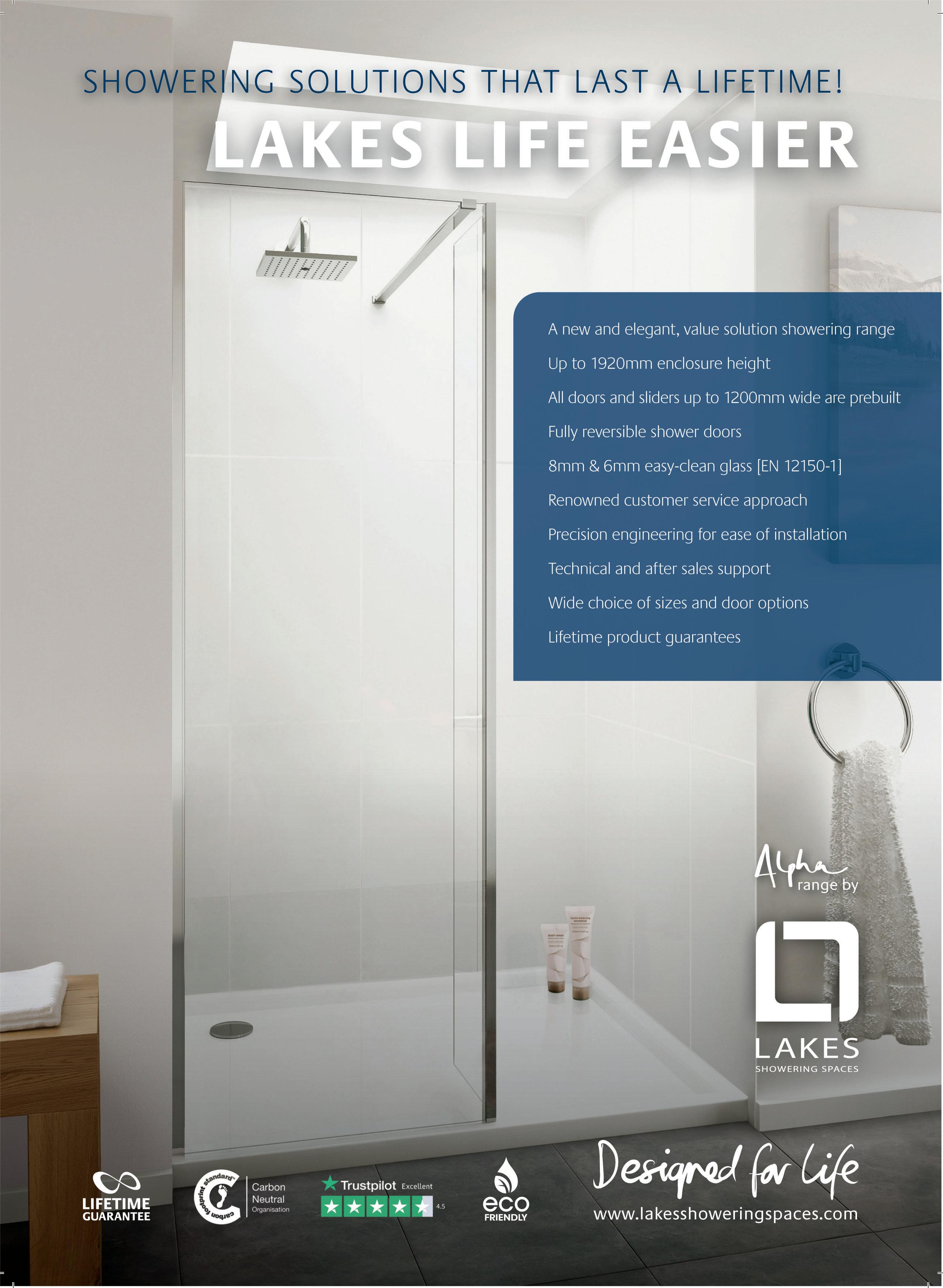
237799 or email circulation@hamerville co uk


It is easy to suspect that, when it comes to housing, the Government either just doesn’t get it or has deliberately set out to make it life as difficult as possible for sole traders and SMEs
This is shown in the latest wheeze from the Department for Levelling Up, Housing and Communities (DLUHC). Having wrecked buy-to-let for private investors in favour of the corporates, the DLUHC is now trying to kill the domestic holiday sector with a consultation suggesting that short-term lets will need planning permission in future
Now the holiday business is not really our concern, but the consultation is indicative of this Government’s whack-a-mole approach to solving the housing crisis, which is to do anything – scapegoating second home and holiday let owners in this instance – other than face the facts about supply, demand and delivery
One understands how popular holiday destinations at the seaside and in the country have a beef with emmets, blown-ins and grockles hollowing out their centres, leaving the towns dark in winter and the remaining locals largely dependent on tourism and hospitality for work.
But punishing second home owners and holiday letters with multiples of council tax, planning permission and letting registers won’t solve the deeper seated problem of insufficient housing for a burgeoning population
You could put every holiday let in Salcombe, Britain’s most expensive seaside resort, back on the market today and the people that can’t afford them now wouldn’t be able to afford them then
St Ives in Cornwall found out the hard way when it decided that all new build housing had to be for full-time occupation. As a result, it’s said the number of new builds has dropped as their viability reduced in a ‘locals only’ market and existing properties have become even more expensive as the supply shortened

This is not to mention the hypocrisy shown by those with a foothold in these areas (Clarkson’s Farm anyone?), who then try to pull the ladder up, vociferously objecting to new developments, especially those of an affordable or social nature, while their neighbours’ children move away.
Unfortunately, it appears to be this NIMBY cohort – which believes the only land that should be built on is the land upon which their houses stand – to which Gove and his pals are in thrall, refusing to consider any practical root and branch reform of planning, while moving away meaningful targets based on need; while they can pointlessly whack-a-mole instead.
More planning whack-a-mole For more information from PHPD visit www.phpdonline.co.uk @phpdonline F I R S T W O R D Professional Housebuilder & Property Developer April/May 5 Editors Johnny Dobbyn John Levick phpd@hamerville co uk Group Advertisement Manager Craig Jowsey 07900 248102 craig@hamerville co uk Advertisement Manager Marcus Hooper 01923 237799 mhooper@hamerville co uk Northern Area Sales Ian Duff 07810 353 525 probuilder@sky com Digital Assistant David Molloy Design Adeel Qadri Group Production Manager Carol Padgett Production Assistant Kerri Smith Circulation Manager Kirstie Day Printer Walstead Peterborough Published by: Hamerville Media Group Regal House, Regal Way, Watford, Herts, WD24 4YF Tel: 01923 237799 Email: phpd@hamerville co uk Professional Housebuilder & Property Developer is a business magazine for firms and individuals involved in all aspects of the building industry The publishers and editor do not necessarily agree with the views expressed by contributors, nor do they accept responsibility for any errors of translation in the subject matter in this publication © 2023 Subscriptions to Professional Housebuilder & Property Developer are available at the following rates: UK: 1 year £30 post paid Europe and Overseas: 1 year £50 post paid Airmail: 1 year £65 post paid To be removed from this magazine’s circulation please call 01923
Circulation: average per issue 12,609 (July 2021 – June 2022)
Newt licencing made simple
Free Upfront Assessment Summaries
(FUAS) are now available from NatureSpace to streamline newt licensing for developers and improve the conservation outcomes for newts
NatureSpace says these summaries will provide cost certainty from the outset, with all the information developers need to join the scheme
This free assessment route has a turnaround time of six weeks – which is still significantly quicker than the standard licence application route
Past methods of great crested newt licensing required seasonal surveys and on-site habitat works that often led to extra expense and delays

NatureSpace stresses that an FUAS cannot be used to support planning applications – it is only for use as a quantification of costs and requirements of the District Licence.
Development designs in less than an hour
Travis Perkins has launched a digital modelling platform that enables SME housebuilders to plan and design bespoke houses generating accurate material pricing, construction drawings, elevations, floor plans, and more, in less than an hour
Designed specifically for housebuilders building up to 250 units a year, WholeHouse is fully compliant with industry standards and the latest regulations
"This portal puts the housebuilder in the driving seat and enables them to simplify the traditionally complex process of planning, costing and building new homes at the click of a button," said Lee Jackson, director of WholeHouse
Housebuilders can create costed, construction drawings with accurate elevations, floor plans, specifications, and more at the click of a button And it is scalable, able to design a multi-unit development site as easily as one plot
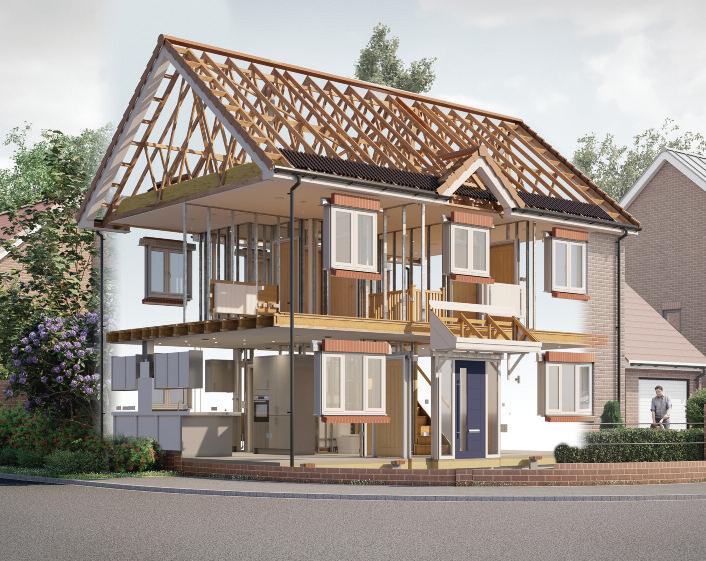
Developed in partnership with industry experts, WholeHouse uses 3D visualisation
Home buyers indifferent to air source heat pumps

Asurvey on behalf of Midlandsbased Spitfire Homes has found that new home buyers are not looking for air source heat pumps –despite the imminent ban on gas boilers in new homes due in 2025
In fact, only 19% of buyers surveyed would pay more for air source heat pumps in new homes, while 37% prefer solar panels
Air source heat pumps came out as the lowest priority for prospective buyers compared to solar panels, smart heating systems, underfloor heating and car
charging points, while one in six do not prioritise any sustainable features at all
The UK Government’s Future Homes Standard requires all new homes to meet strict energy efficiency requirements, with Redrow and smaller developers committing to air source heat pumps.
“With the new legislation on gas boilers being introduced in less than two years, it’s concerning that air source heat pumps are not yet on the radar or the wish lists of prospective buyers,” comments managing director Ben Leather.
Air source heat pumps are four times
Welsh Slate reopens Blaenau Ffestiniog quarry
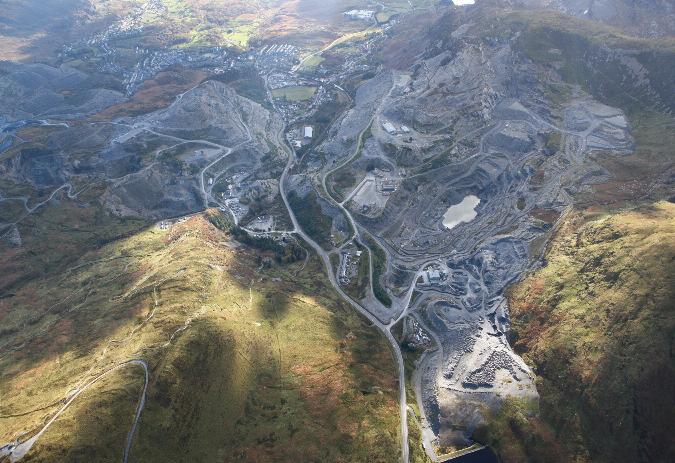
Welsh Slate is re-opening its quarry at Blaenau Ffestiniog to meet demand for its roofing, architectural and hard landscaping/aggregate products
More than 20 staff have been recruited to produce 25,000 roofing slates per week, rising to an anticipated 30,000 in the near future. Ffestiniog architectural products such as cladding, paving, flooring, window
cills, copings and fire hearths will also be available.
The re-opening has been made possible by sophisticated geotechnical mapping, which identified suitable underground chambers with minimal overburden.
to bring plots and developments to life. The first two homes built using the platform will be ready by September and are based in the Midlands, following extensive pilot schemes across the country
Travis Perkins says that the platform ensures detailed and accurate material pricing from the beginning, promoting improved sustainability by reducing material waste and providing informed choices around low carbon solutions
Additionally, it says, WholeHouse reduces development risk and save weeks on design development, saving both time and money
more efficient than gas boilers, reducing CO2 emissions and saving on energy bills by transferring energy from outside air to heat water for radiators and underfloor heating.
E-mail your news & views to phpd@hamerville.co.uk or tweet us at @phpdonline
T h i s e n a b l e d t h e e x i s t i n g r o o f o f t h e m i n e t o b e r e m o v e d t o e x p o s e t h e s l a t e p i l l a r f o r e x t r a c t i o n , a p r o c e s s t h a t h a d b e e n s t a r t e d b y t h e p r e v i o u s o w n e r s i n 1 9 7 3 b u t w a s t h e n c o n s i d e r e d u n t e n a b l e .
N E W S 6 April/May Professional Housebuilder & Property Developer
New record for UK construction output inflated, says Barbour R
ecent figures showing that UK construction output had hit record figures and a substantial yearly rise of 15%, have been dismissed by industry expert Barbour
ABI
The construction intelligence specialist says the figures show the effects of inflation on construction products, not a leap in productivity
According to the latest data from the Office for National Statistics (ONS), total UK construction output value reached £204bn in 2022 – the first-time annual construction value has surpassed £200bn
The ONS figures show a 15% rise from 2021 output values in nominal terms, despite mid-2022 forecasts predicting a value closer to £186bn
But when Barbour ABI analysed the difference between real and nominal price indices it found that approximately £23bn has been added to the cost of UK construction since 2019, meaning the value would have been closer to £181bn if prices had remained at pre-pandemic levels
It attributes this increase in output value to inflationary effects driven by post-Covid19 shortages, the war in Ukraine, and the cost-of-living crisis, leading to energy and material prices rising
“Price rises were at record levels over summer 2022, with many goods seeing 25% annual inflation,” explains Barbour ABI’s AMA research director, Laura Pardoe “This has now dropped closer to 15%, but some products still hover well above 20%
and insulation products have recently jumped to 50% ”
Looking ahead, Barbour ABI chief economist Tom Hall believes that the UK economy is will face headwinds that could reduce the viability of many building projects. Increases in base rate to 4%, for example will hit the housing market while lack of growth in the UK economy will lead to cuts in consumer spending
“Construction product inflation and shortages are expected to ease over the second half of 2023 but will not return to the stability in the 2010’s Contractors are working on razor-thin margins All in all, 2023 is likely to be another bumpy year,” he says

Despite this, Barbour ABI also saw high levels of contract awards agreed throughout 2022, which reached a record high in Q1 2022
As a result, Barbour ABI predicts high levels of activity in construction during 2023 in the infrastructure, warehousing, and health sectors
Tim treks across Dartmoor for Debra
Tim Jackson, an area sales manager with Marley, is trekking 107 miles around Dartmoor National Park in Devon this spring to raise funds for DEBRA.
The national charity supports people affected by Epidermolysis Bullosa, a painful genetic skin blistering condition known as 'Butterfly skin' Tim and his daughter have the condition, which affects them every day. He is carrying a 20kg backpack so

Bobcat: US honour for compact loader creators
The inventors of the world's first compact loader – the forerunner of the Bobcat skid-steer loader – are to be inducted into the National Inventors Hall of Fame (NIHF) in the United States
Louis and Cyril Keller, who held six US patents between them, will be honoured for their invention that enabled builders to work in tighter spaces and with greater flexibility
The brothers were running a small machine-blacksmith shop in Minnesota when, 1957, a farmer asked them for a self-propelled loader that was light enough to be lifted to the second floor of a turkey barn and small enough to clean around the barn’s upright poles
Within six weeks they had built a threewheeled loader with two drive wheels in front and a caster wheel at the rear: the world’s first loader to use skid-steering.

Its patented clutch system, operated with two hand levers, meant it could be steered without a steering wheel by putting put one side of the loader into forward and the other side into reverse
all without using a transmission gearshift
The NIHF annually recognises inventors, promotes creativity, and advances the spirit of innovation and entrepreneurship
F a m e i n 1 9 9 9 a n d t h e M i n n e s o t a I n v e n t o r s H a l l o f F a m e i n 2 0 0 4
he can be self-sufficient and camp in the wild
Tim will cover almost 15,000 feet of elevation change during the 3-4 day trek, with a maximum height of 1,391 feet
Tim will be sharing his location so anyone who wants can join him and, he hopes, bring biscuits
If you would like to support Tim’s trek, please visit his Just Giving Page Timmy’s 107 mile Dartmoor Way trek
Lofthouse wins 2023 South Master Builder Awards

national title, which will be announced at the national ceremony on 22 September 2023 by compere and host Nick Knowles
The company is now shortlisted for the
The awards recognise dedication to employees and clients, as well as outstanding business management and leadership.
–
T h e K e l l e r b r o t h e r s w e r e i n d u c t e d i n t o t h e A s s o c i a t i o n o f E q u i p m e n t M a n u f a c t u r e r s H a l l o f
Lo f t h o u s e R e s i d e n c e s h a s w o n t h e S o u t h e r n C o u n t i e s B u i l d i n g C o m p a n y o f t h e Y e a r A w a r d i n t h e F e d e r a t i o n o f M a s t e r B u i l d e r s ’ 2 0 2 3 S o u t h M a s t e r B u i l d e r A w a r d s
Professional Housebui der & Property Developer April/May 7
Bargate Homes begins sales at St Thomas' Mead Bargate Homes has started sales at its St Thomas' Mead development in Old Bedhampton, Hampshire, with prices ranging from £300,000 to £625,000

The development features a range of two-, three-, and four-bedroom houses, bungalows, and chalet bungalows. The homes are constructed to EPC-B standards, which enables purchasers to benefit from Green Mortgage rates

Bancon Homes


Bancon Homes starts next phase at Aden Meadows
Bargate Homes

The homes come with high internal and xternal specifications that exceed Building Regulations. Standard features include underfloor heating, stylish kitchens and bathrooms, and a choice of quality flooring options
Built next to a freshwater stream in the Old Bedhampton Conservation Area, the homes feature traditional and detailed architecture to be seen in the older houses The grounds now benefit from new tree planting, landscaping, and measures to improve biodiversity

Beal Homes plans £30m scheme in Kingswood, Hull
Beal is returning to Hull's Kingswood district with a £30m project that will deliver more than 150 homes
The King's Fold development will consist of two and three-bedroom houses built in mews style, forming a village-like atmosphere around courtyards on a 10-acre plot
Beal has a long history in Kingswood, having constructed more than 1,200 homes during the last 26 years
Beal Homes
Elan Homes secures consent for 100 dwelling Worcestershire estate



Elan Homes has secured an 8 25 acre site on Stourport Road in Bewdley, Worcestershire, with outline planning consent for up to 100 dwellings
Bancon Homes is starting the next phase of its Aden Meadows development in Mintlaw, Aberdeenshire, consisting of 28 detached homes with garages, ranging from three to five bedrooms

Available in nine different styles, starting from £269,995, these homes will have solar PV roof panels and are expected to have an EPC Band B Energy Efficiency Rating
They all feature well-designed living spaces with full-height windows, flooding the rooms with light The designer dining kitchens from Laings of Inverurie come complete with premium Siemens appliances

Many homes also include utility rooms and a separate study or family room, providing ample space for families to enjoy The bedrooms are spacious and have built-in oak finish wardrobes, while the bathrooms and ensuites are tiled with high-quality Porcelanosa tiling.
The homes have spacious gardens and are close to the 230-acre Aden Country Park, which has nature trails, woodland walks, a heritage centre, and a children's adventure playground
Rippon Homes opens Market Rasen show home

Elan Homes

The developer is currently working on a reserved matters application, with plans to submit it in the summer The proposed anging from one to five bedrooms, comprising both private sale homes and affordable housing.



The site will also provide designated public open space, including a play area, as well as financial investments in the local community worth over £340,000
These investments include almost £220,000 for education, almost £40,000 for health contributions, almost £55,000 for highways and traffic measures, and over £30,000 for sports facilities contributions.
Life Less Ordinary to build 40 flats in Orpington
Boutique property developer Life Less Ordinary has received approval from the London Borough of Bromley to construct a 4/5 storey mixed-use development with 40 luxury flats in Orpington High Street

The development is set to include a 40,000 sq ft retail space, with the nearby Orpington GPO restaurant and bar set to occupy the premises as a florist, butcher, and coffee shop
Life Less Ordinary



The 40 apartments will comprise one, two, and three-bedroom units, each with bespoke German kitchens, stylish bathrooms, private balconies, and shared landscaped amenity space
Construction will start by May with a build programme of 18 months and sales expected to launch in Summer 2024.

Rippon Homes has unveiled its Windsor show home at the Fox Hollow development located near Market Rasen
The project includes a mix of 98 homes ranging from two to four bedrooms, including semi-detached and detached houses and bungalows
The show home was created by Etch Interiors, with creative director Hannah Stelling aiming for a comfortable and relaxed feel

She says she focused on an organic, soft and natural feel, with earthy tones, natural fabrics like linen and warmer walnut furniture, complemented by brass accents, deep greens and warm taupe colors, giving the house

Rippon Homes


D E V E L O P M E N T S
Honey applies to build 95 Barnsley homes

Honey Hayfield
The eight-acre development on Barnburgh Lane in Barnsley will feature 95 two, three, and four-bedroom homes, and will be funded by private equity firm Alchemy Partners via its Alchemy Special Opportunities Fund IV
Honey's 16 house types have been designed for “style, substance, and sustainability”, with prices starting at £170,000 for a two-bedroom mid-terrace property
Standard features in every Honey home include bi fold doors, individually designed fully integrated kitchens and boutique style bathrooms with a signature free standing bath and full height tiling. All properties will have an electric vehicle charging point.
In addition, the house types will accommodate the Future Homes Standard which requires all new homes being built from 2025 onwards to produce 75-80% less carbon emissions
Subject to approval by Barnsley Metropolitan Borough Council, construction is expected to begin in June, with the first residents moving in by Q1 2024
The company previously submitted plans for a £14m, 50-home development in South Normanton, Derbyshire, earlier this year

Metis Homes to provide 17 affordable homes
Under an agreement with New Forest District Council, Metis Homes will provide 17 homes for affordable housing at the Forest Edge development in Fordingbridge, Hampshire

The development includes a mix of 63 houses and apartments, all designed to achieve an EPC rating of B, with electric vehicle charging points, high levels of insulation, and thermal efficiency
The market homes are eligible for 'green mortgages' with more favorable rates, and the fourbedroom houses have solar PV panels, allowing residents to generate some of their electricity and reduce their carbon footprint

Metis Homes


The development plan also includes two play areas, a purpose-designed dog agility course, and access to forest walks right from the development boundary, all surrounded by mature woodland trees
Sigma Homes begins £8m scheme in Cuckfield, West Sussex



Sigma Homes has launched an £8 3m development, Hanlye View, in Cuckfield, West Sussex
The development, comprising 13 energy-efficient homes, is on the site of the former Court Meadow School, which had been vacant for a decade.
The scheme features a mix of three- and four-bedroom homes, ranging from 1,100 to 1,707 sq ft Nine of the 13 homes are now on the market, priced from £730,000, with the first properties expected to be ready for occupancy by the end of September 2023
The properties will also have electric car charging points and high levels of insulation, achieving a high EPC-B rating

Hayfield to build 50 home estate at Gotherington, Gloucestershire
Solihull-based Hayfield has submitted a reserved matters application to Tewkesbury Borough Council for a development of 50 new homes in Gotherington, Gloucestershire.
The £35m scheme will be built on a 6 27-hectare site just north of Bishops Cleeve and will consist of a mix of two, three, and five-bedroom EPC A-rated homes and bungalows. The development will feature 20 affordable homes and the rest will be available for open-market sale

Each home will be energy efficient and equipped accordingly with solar PV panels, an air source heat pump, underfloor heating, increased insulation, water efficiency measures, and electric vehicle charging points
The development's design will be inspired by the character of Gotherington's existing properties, and the materials used will reflect those used throughout the village
The site will deliver a biodiversity net gain through measures such as native tree planting, installing an attenuation pond, and introducing wetland wildflowers
Sigma Homes


The development follows a traditional settlement pattern and will feature new trees and hedgerows for biodiversity. Additionally, Sigma Homes will donate more than £208,000 as part of S106 agreements to support local schools, health services, and other amenities

E-mail your latest developments to phpd@hamerville.co.uk
H o n e y , t h e S h e f f i e l d - b a s e d h o u s e b u i l d i n g c o m p a n y f o u n d e d b y f o r m e r A v a n t H o m e s C E O M a r k M i t c h e l l , h a s s u b m i t t e d p l a n s f o r i t s f i r s t Y o r k s h i r e d e v e l o p m e n t , a £ 2 3 5 m p r o j e c t c a l l e d I r i s
The latest figures from the Builders Merchant Building Index (BMBI), published in March, reveal that year-on-year value sales to builders and contractors by Britain’s builders’ merchants were up +0.2% in January 2023 compared to the same month in 2022. This nominal growth came from inflation as volume sales were down -16.5% while prices rose +19.9%. With an extra trading day this January, like-for-like sales were -4.6% lower.

January merchant sales marginally up but volumes still down year-on-year
Nine of the twelve categories sold more in January compared to the previous year Renewables & Water Saving (+46 0%) continued to perform strongly, while Decorating (+20 5%), Plumbing, Heating & Electrical (+17.5%), Workwear & Safetywear (+14.4%) and Kitchens & Bathrooms (+12 4%) also did better than overall sales Heavy Building Materials grew more slowly (+4.8%). Timber & Joinery Products (-14 6%), Landscaping (-11 8%) and Services (-0 5%) all sold less

Month on month
Month-on-month, total merchant sales were +31 1% higher in January 2023 than seasonal low month, December 2022 Volume sales also grew (+28.6%) with price slightly up (+1 9%) With five more trading days in January, like-for-like sales were flat (-0.1%). Renewables & Water Saving (+49 6%) grew the most, followed by Ironmongery (+38 0%), while Decorating (+34.6%), Timber & Joinery Products (+33 9%) and Heavy Building Materials (+32 2%) also performed well
Rolling 12-months
Total merchant sales in the twelve months from February 2022 to January 2023 were +5 3% up on the same period a year before. Price inflation was a double digit +16 5% while volumes were down -9 6% With two less trading days in the most recent period, like-for-like sales were +6 2% higher Ten of the twelve categories sold more with Renewables & Water Saving (+32 5%) and Kitchens & Bathrooms (+17 7%) the standout categories Decorating (+11 4%) and Heavy Building Materials (+10 5%) also did netter than merchants overall Timber & Joinery Products (-5.0%) and Landscaping (-2 5%) sold less
Ian Doherty, Chief Executive of Hexstone, and the Owlett-Jaton brand and BMBI’s Expert for Fastener & Fixings said: “The introduction of the UK’s own UKCA mark has continued to be a vexed issue for fasteners and fixings Along with other building products, they fall under the Construction Products Regulations UKCA replaces the European CE mark, which indicates that products for sale conform with all necessary safety, technical, and performance requirements

“In December, new advice was issued by the Department for Levelling Up, Housing and Communities (DLUHC) This advice differed markedly from the previous advice, but the good news is that CE will continue to be recognised on CPR products until the end of June 2025, removing any shorter-term concerns about availability of products which meet regulations.”
Emile van der Ryst, Key Account Manager – Trade & DIY, GfK, which compiles the data for the BMBI report, added: “Due to market turmoil in 2022, some of the monthly figures need further context This month is affected by Heavy Building Materials, Timber & Joinery and Landscaping distorting the total market view.
“These three categories make up around 75% of total market value and heavily influence topline trends but they are each quite different Heavy Building Materials has one of the lowest average prices of the categories but has seen larger than market average price growth
WAN T TO KNOW MORE?
BMBI Experts speak exclusively for their markets, explaining trends, issues and opportunities For the latest reports, Expert comments and Round Table videos, visit www.bmbi.co.uk
1 0 April/May Professional Housebuilder & Property Developer M A R K E T R E P O R T
” T h e B M B I i s a b r a n d o f t h e B M F T h e B M B I r e p o r t , w h i c h i s p r o d u c e d a n d m a n a g e d b y M R A R e s e a r c h , u s e s G f K ’ s B u i l d e r s M e r c h a n t P o i n t o f S a l e T r a c k i n g D a t a w h i c h a n a l y s e s s a l e s o u t d a t a f r o m o v e r 8 0 % o f g e n e r a l i s t b u i l d e r s ’ m e r c h a n t s ’ s a l e s a c r o s s G r e a t B r i t a i n . T h e f u l l r e p o r t i s o n w w w . b m b i . c o . u k .
Builders
The
Merchant Building Index (BMBI)

It’s good to talk
Soaring costs and constraints in the construction industry are constantly rising, which is causing an increase in the number of contractors declaring bankruptcy, not to mention significant delays to the delivery of housing projects Along with the expenses of labour and supplies, land values are also growing, making the outlays associated with development projects greater than we’ve seen in a long time
Yet, in spite of such a challenging landscape, support is available for developers provided they are willing to engage with lenders before any unrecoverable difficulties come to fruition As with any effective partnership, transparency is key After all, delay is not a new concept to lenders and will always be considered in the form of contingency when assessing any construction loan
Key considerations to make when approaching a lender are:
1 Engaging with the lender at the earliest opportunity, especially if significant disruption has been identified The lender will need time to find a solution, often with input from the bank’s independent monitoring surveyor (IMS) and legal advisors, so the earlier the forewarning, the greater the chance of a solution

2 Be clear about whether the delay is being caused by a relevant or significant event The lender will need to know whether the developer or architect has put something in writing to confirm and set out a ‘fair and reasonable’ request for an extension of time and whether that extension of time is deliverable.
3 Be prepared to provide a detailed and revised timeline or cashflow as well as a solution to the issue in hand Evidence that the project remains viable and that a feasible plan B is in place can go a long way too
Lenders recognise the mounting risks developers are susceptible too, which is
why the following measures are increasing in prominence:
1. Loans to developers rather than contractors, with fixed-price agreements between borrowers and contractors then helping to lower the risk of cost overruns
2 A requirement for lower overall leverage for property development finance to lower risk
3 A good level of contingency – ideally around 10% against core build cost – for all development appraisals

4 A full due diligence assessment of any main contractors’ finances.
5 Verification of the projected costs of construction to ensure developers are able to meet their contractual obligations This may include an assessment of forecasted increases in material and labour costs
6 A staged drawdown structure that ensures funds are being used for their intended construction purposes and not to cover unanticipated increases elsewhere in the project. While strict deadlines and site inspections may seem daunting to some, a lender’s insistence on both of these will ensure funds are focused on the successful progression of a development
In such a challenging and uncertain landscape, speed of action can prove vital. Those developers experiencing unforeseen delays should engage with their lender at the earliest opportunity with an open and honest assessment Through effective management of risk and an understanding of a developer’s current situation, lenders will often be able to ensure a project can still remain on course to complete
WAN T TO KNOW MORE?
For more information on Secure Trust Bank Real Estate Finance and its property development finance options, go to www.rdr.link/dam001
F I N A N C E U P D A T E
Mike Feasey, relationship director at Secure Trust Bank Real Estate Finance explains why it is more important than ever for developers to engage with lenders in order to reduce the risks brought on by inflation, supply chains disruption and rising interest rates.
12 April/May Profess onal Housebuilder & Property Developer

First Homes: one year on I
t is over a year since First Homes became a consideration in planning applications. Despite much fanfare from the Government about “supporting people to own their home and make home ownership a reality,” there has been limited take-up by housebuilders and a lukewarm reception from local authorities

The requirement has not been established long enough for there to be a clear picture on the popularity of First Homes among buyers, but there are some significant downsides in comparison to other forms of affordable housing.
Councils have largely been noncommittal on First Homes in their local plans. Many have issued interim position statements confirming that First Homes are now a policy requirement, but caveat that non-compliance can be justified by viability testing Most have put off stipulating a specific discount, instead adopting the 30% minimum in the absence of evidence to support higher discounts


In London, rented tenure products have remained a priority The GLA issued a Practice Note in July 2021 stressing its preference for Social Rent and London

Affordable Rent over First Homes In March this year, Camden became the first local authority to formally reject First Homes in its planning policy, setting a precedent for others to do the same Camden stated that it would continue to prioritise the delivery of affordable housing at rents related to local incomes instead of First Homes
This is unsurprising in high-value areas such as Camden. Recent schemes in the borough have starting prices of over £500,000, meaning a substantial discount would be required for homes to fall under the £420,000 price cap Even so, buyers would require a hefty deposit and given the First Homes eligibility cap on household income of £90,000, there is a limited market for those who can both qualify for and afford a home under the scheme
Research has shown that across London, just 12% of first-time buyer
households would have the required income for an average two-bedroom flat under the First Homes scheme. In pricier boroughs such as Camden, this would be even lower
Affordability is clearly an issue. In London, the average deposit for a firsttime buyer stands at around £115,000 according to Halifax Nationally, it is circa £54,000 This affordability problem has been exacerbated by soaring interest rates on new mortgages and the withdrawal of the number of mortgages offering over 90% loan-to-value (LTV). N e v e r t h e l e s s , i n t h e f e w s c h e m e s t h a t h a v e s t a r t e d s e l l i n g F i r s t H o m e s , t h e y h a v e r e p o r t e d l y p r o v e n v e r y p o p u l a r a n d a t t r a c t e d a l o t o f i n t e r e s t S i g n i f i c a n t l y , a l l t h e s e s c h e m e s h a v e b e e n o u t s i d e L o n d o n w h e r e h o m e s a r e m o r e a f f o r d a b l e
For housebuilders, there are several disadvantages to First Homes Firstly, whereas other first-time buyer initiatives such Help to Buy have been targeted at selling private homes, First Homes must be sold by the developer, in direct competition with the private homes. This increases sales risk and exposes the developer in the event of a fall in prices
A further problem is that First Homes are restricted to an open market sales rate, rather than sale in bulk to a Registered Provider with payment in instalments during construction This reduces the IRR or return on capital expenditure because the revenue is received at a later date Financing costs also increase because the receipts cannot be used to offset the construction costs
In summary, First Homes face various issues from multiple angles. Many local authorities would prefer to provide rental properties which tackle genuine affordability issues First Homes also present disadvantages to developers who would rather provide traditional affordable housing And for many buyers, prices remain unaffordable, particularly during current economic uncertainty and reduced availability of mortgages
S P E C I A L R E P O R T
Richard Lundy, senior surveyor, Carter Jonas (London), looks at what impact First Homes has had, if any, on planning and home ownership.
14 April/May Professional Housebu lder & Property Developer

how to transform a proper t y with cladding
1. It lasts for a minimum of 50 years: Made from durable fibre cement for longlasting durability and resilience, Cedral facades are designed to withstand the harshest weather conditions and have a minimum life expectancy of 50 years

2. It provides kerb appeal: Smart and stylish, Cedral cladding comes in a choice of 21-factory applied colours and 2 woodstains in a choice of woodgrain and smooth finishes. Planks can be installed horizontally or vertically for a variety of eye-catching looks


3. Installation is quick and easy: With its lightweight structure and easy-cut planks, Cedral facades offer fast and efficient installation
4. It drastically reduces maintenance costs:
Cedral cladding doesn’t need regular repainting and won’t rot, rust, warp or crack
5. It offers protection, insulation and safety:
i c i n s u l a t i o n o f t h e b u i l d i n g


6. It’s a more sustainable option than many other materials on the market: Fibre cement uses fewer raw materials and less energy in its manufacture, produces less waste than some traditional building materials and is fully recyclable
Be inspired by customer projects
With an impressive colour palette, Cedral facades can be used to achieve a variety of eye-catching styles, such as a stunning New England home, elegant country retreat or 21st century trend-setting space – among many other designs and looks


Get help using Cedral products
Installation guides, fixing sheets and colour charts can be downloaded from the Download our installation guides, fixing sheets and colour charts from the website or use its online form to send us any technical queries
WAN T TO KNOW MORE?
To find out more about Cedral facades, visit rdr.link/dam002
S P O N S O R E D F E A T U R E
Cedral has been helping the industry to build stylish, resilient homes for decades – homes that not only look good but weather well and last a lifetime. Crafted from durable fibre cement, here’s what you need to know about Cedral cladding.
C e d r a l b o a r d s a c t l i k e a s e c o n d s k i n o n a b u i l d i n g ’ s e x t e r i o r , a r e f r o s t , m o u l d a n d w a t e r r e s i s t a n t a n d c o m p r e h e n s i v e l y m e e t t h e f i r e p e r f o r m a n c e c l a s s i f i c a t i o n A 2 - s 1 , d 0 E x t r a i n s u l a t i o n c a n b e a d d e d t o i m p r o v e t h e t h e r m a l a n d a c o u s t
16 April/May Profess onal Housebuilder & Property Developer

Speed is of the essence
Luke Simmons, managing director of Northamptonshirebased Cora, looks at the future of environmentally aware housebuilding and the role off-site construction will have in creating a more sustainable sector.


The housebuilding sector has the power to make real difference in lowering carbon emissions and protecting the environment – and Modern Methods of Construction (MMC) will be an important tool in achieving that goal.
The housebuilding industry in England and Wales is now worth over £65 billion a year, employing more than 700,000 people, so even small changes can make a big difference Most homes in the UK are still constructed the traditional way - from bricks and blocks on site – however, MMC is becoming increasingly more common

Essentially, MMC involves the use of off-site construction techniques, taking fabrication that has traditionally been
delivered on site and doing it in a controlled factory environment This could be constructing the entire building off-site – known as volumetric construction – or it could mean panellised systems, where the walls and roof are made in a factory and put together on site
These methods have huge advantages from an environmental point of view, in that they drastically cut down the carbon footprint of the materials by reducing transport costs. There are advantages economically too, as these prefabricated items can be put together by semi-skilled labour
Houses built using this method can be up in around a week, rather than months. This is something we at Cora are right behind – and have set a goal of using offsite construction in 80% of home completions by 2025
The benefit of all modern methods of construction is that because it is produced in a controlled factory environment, huge energy savings can be made as parts can be mass produced
Energy is one of the global baddies in terms of greenhouse gas emissions so moving more construction from the construction site to the factory is a big step in the right direction.
On top of that, more factories are
S U S T A I N A B I L I T Y
18 April/May Professional Housebuilder & Property Developer
moving towards using renewable energy to power them, cutting down the carbon produced even further.
The less you are doing on site using petrol or diesel machinery and the more you move to the factory, the less emissions you will produce. Then there are the savings that can be made through simply reducing the time it takes to build the homes.
Building houses the traditional way on a development site in wind, rain snow and mud is not easy, and in most cases is better to manufacture the parts in a factory. Through using off-site methods, developers can complete homes much quicker, which itself brings time savings and sustainability savings. If you are bringing in completed pieces rather than lots of different materials, you can really cut down on transports costs, and the extra emissions they bring.
Benefits to the customer
MMC not only help developers lower the environmental impact of developments, they are also brilliant homes to live in.
As homes are assembled off site rather than built brick by brick, with each part created under factory-controlled conditions, the air tightness and energy efficiency of the homes is vastly improved.



Using high-performance, long-lasting materials, with increased insulation and ventilation, the homes require less energy to run – potentially cutting down how
much customers pay to heat them and emitting less greenhouse gases into the atmosphere directly and indirectly.
Sustainability goals
I think it is clear to most people that the climate crisis is a threat to nature, our economy and society at large – and we need to act.
The construction industry, being a large contributor of emissions due to the sheer scale of the sector, I think can play a huge role in lowering emissions and building a more sustainable future.
At Cora, we are determined to show how developers can create excellent homes and thriving communities in an environmentally conscious way. Since our rebrand last year, we have produced an in-depth Sustainability Report , identifying ways in which we will reduce our emissions, construction waste and carbon footprint.

We have pledged to halve our greenhouse emissions by 2030 and to achieve net zero by 2050, signing up to the SME Hub Climate Change Commitment and the UN’s Race to Zero. MMC of Construction will play a key role in this goal.
However, we don’t want to walk this path alone – we want to see a change in the sector as a whole. The construction industry is at the forefront of the climate emergency, and we want it to play its part in changing the world for the better.
WAN T TO KNOW MORE? To read Cora’s Sustainability Report, go to www.rdr.link/dam003 Professional Housebuilder & Property Developer April/May 19

Masonr y matters
Masonry? A solution for sustainable housebuilding? While it’s perhaps not the first building method that jumps to mind, there is a strong case to be made for familiar masonry techniques to be considered as a sustainable choice for housebuilders

Approaching energy efficiency fabric first Sustainable homes must function sustainably. Yes, we can install solar panels, air source heat pumps and EV charging But we have to approach energy efficient home construction from the building blocks, quite literally Masonry products exhibit excellent thermal performance which makes them a great choice for new homes designed to meet current and future energy efficiency standards Approved Document L (AD L) now recommends building with the same material below DPC as in the external walls to achieve insulation continuity within the building fabric. This advice points towards masonry as the best choice for wall construction with robust materials better suited to use in foundations
Masonry doesn’t have to mean slow construction Lightweight masonry blocks, like aircrete, exist to speed
up construction while maintaining building performance and can also be used below DPC in foundations MMC aircrete solutions are also available such as storey-high wall panels of aircrete which allow a house shell to be constructed within five days


Highly thermally efficient, aircrete cavity walls combined with the right insulation materials can reach a U-value as low as 0 11W/m2K Aircrete has proven success in Passivhaus construction, helping to form airtight structures that meet the stringent building standard Passivhaus homes are designed to reduce or eliminate additional heating, which saves homeowners money and drastically reduces a dwelling’s operational carbon footprint
This isn’t just about keeping the heating off in winter, however Last year’s updates to AD L confirmed that future home design will require highperformance building fabric and better insulation This may reduce energy use in cooler months, but as summers get hotter this could risk an overheating epidemic
How to mitigate this? In its How to Build a Passivhaus guide, the Passivhaus Trust has said in general terms the more mass there is within the thermal envelope, the easier it is to control the possibility of overheating in warm weather This is another feather in the cap of masonry construction, particularly when we’re
S U S T A I N A B I L I T Y
Jenny Smith-Andrews, head of marketing at H+H, outlines why housebuilders shouldn’t discount masonry in their search for sustainable construction.
Professional Housebuilder & Property Developer April/May 21
looking to build resilient homes ready to take on future climate challenges
Building for the future
Masonry doesn’t have a total monopoly on high-performance building fabric. But it does have proven longevity Designing high-performance homes is one thing, but if they aren’t built to last, what’s the point?
Homes constructed of masonry, have a life expectancy of over 150 years whereas dwellings in the UK today are only designed to last for 60 years Soon, that is going to be less than two mortgage terms The third quarter of 2022 saw half of all first-time buyers and a quarter of all homeowners taking out mortgages over a 30-year term. Clearly building houses with such short lifespans is not sustainable nor practical

Robust, masonry dwellings are also likely to be resistant to other problems like fire, mould and rot Damp is a particular problem in some of the UK’s newer homes With brick and block construction, interstitial condensation in buildings is less likely to cause damage
Water falling or laying on brick and block, while not ideal, will not cause structural damage and can be easily rectified
To build up a sustainable housing stock, we must design it with longevity in mind and to that end masonry construction is the obvious solution
Unacknowledged potential
When it comes to embodied carbon, there is room for improvement – no question However, there is enormous potential for the masonry industry to continue decarbonising – starting with manufacturing Significant advancements have already been made of course. The UK, for example, is leading the way with sustainable production of aircrete blocks

Significant improvements to the scope 1 and 2 emissions of masonry manufacturers will also come as the nation’s electricity system decarbonises
In 2021, the government announced its aims to fully decarbonise the power grid by 2035 A Climate Change Committee report, published earlier this year, outlined recommendations to the government for how this goal can be reached, voicing confidence that a “reliable, secure and cost-effective” decarbonised electricity system is very much possible by 2035
Admittedly, this isn’t the whole picture Scope 3 emissions contribute significantly to the embodied carbon of masonry products. However, in part, these emissions may already be mitigated in a process called recarbonation
All cement and lime-based products naturally absorb CO2 from the atmosphere during their lifespan, acting as permanent carbon sinks during the use phase of a building and continue when it is pulled down and recycled
Recarbonation of concrete is a wellestablished science and recognised by the IPCC in its Sixth Assessment Report. A recent study from AAC Worldwide has helped to quantify the process, finding that aircrete products can absorb 77 kg of CO2 per m3, with 80% of recarbonation achieved after 50 years and 95% within 80 years. Surely this calls for a step change in the way we currently think about ‘sustainable construction’ methods?
A resilient, efficient housing stock is what we need and masonry is the material to get us there With the inevitable decarbonisation of manufacturing, carbon reduction in masonry supply chains and recarbonation’s potential, we’d be remiss to leave masonry construction in the dust just yet
WAN T TO KNOW MORE? Download the How to Build a Passivhaus guide by going to www.rdr.link/dam004 For more information on H+H’s aircrete offer, visit www.rdr.link/dam005 S U S T A I N A B I L I T Y
22 April/May Professional Housebuilder & Property Developer



Wildlife welfare

Over 40% of our wildlife has declined since the 1970s and around one in seven species are at risk of extinction Nationally, we need to move on from thinking that protecting small pockets of nature is enough – it isn’t – and taking a zonal approach to planning will not stop the spiral of decline We must help wildlife to recover quickly, and housebuilders have a crucial role to play Putting nature first doesn’t only benefit birds, bats and beetles – it is critical for

people too Studies have consistently proven how spending time in green spaces improves people’s health and wellbeing A review of nature and wellbeing research over the past seven years concluded that being in nature reduced stress and mood disorders, improving mental health and psychosocial wellbeing. We all benefit from living in green, wildlife-rich environments – but for too long nature has been too far down the priority list, and that has to change.

2 6 April/May Professional Housebuilder & Property Developer
S U S T A I N A B I L I T Y
By taking responsibility to ensure that new homes minimise impacts on the natural world, developers can actively contribute to nature’s recovery. Dom Higgins, head of health and education at The Wildlife Trusts reports.
Another influence on people’s wellbeing is how much control they have over their surroundings There has been somewhat of a shift in recent years from ‘community engagement’ to ‘community empowerment’, something The Wildlife Trusts are enabling through one of our latest initiatives, Nextdoor Nature. The scheme is designed to provide people with advice and support so they can improve where they live for nature – rather than ‘doing it for them’ This could be through creating habitat for wildlife or working with councils to improve green space
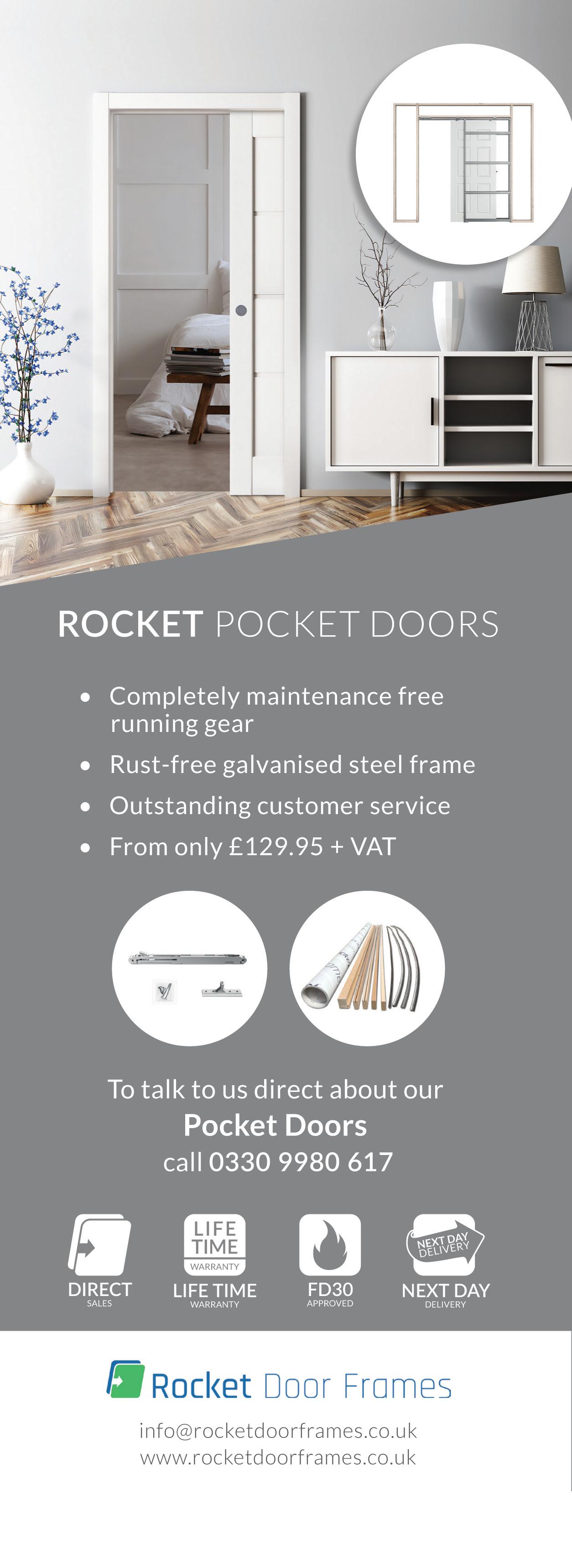
Developers can contribute to this idea by inviting input from communities about how to enhance an area for nature These considerations must begin at the earliest possible opportunity
A 20-year study by the Botanical Society for Britain and Ireland (BSBI) recently found that 53% of our native plants have declined due to human activities. Where habitats shrink and become isolated from one another, wildlife species dwindle It is so important that surveys of proposed developments detail fully what species and habitats exist and how they relate to other wildlife in the vicinity
Creating Nature Recovery Networks is fundamental to reversing declines in wildlife – but these wild webs can only succeed by people working together Ideally, new developments retain the best wildlife features, such as old trees, hedgerows and watercourses, as integral to any development We should then be looking at ways to increase the connectivity of wild places, as well as incorporating easy-win features like bee bricks and swift boxes into the building process It’s as much a change of how we think, as well as how we build.

Wildlife corridors can help small mammals and insects move around. To that end, we must make sure that manmade barriers that separate properties are permeable for wildlife. This could be as simple as creating holes in fences for hedgehogs, though it could extend to the redesign of drainage
systems Culverts can hamper amphibians from reaching habitats, but well-placed slipways and ramps can enable creatures to move between breeding and feeding areas.
T h e r e a r e n o m i n i m u m r e q u i r e m e n t s f o r h o w s u s t a i n a b l e a h o m e s h o u l d b e , b u t i t i s g o o d p r a c t i c e f o r d e v e l o p m e n t s t o w o r k t o w a r d s t h e B R E E A M s t a n d a r d s T h i s b e n c h m a r k c o v e r s a w i d e v a r i e t y o f e n v i r o n m e n t a l i s s u e s i n c l u d i n g h o w b u i l d i n g s a f f e c t p e o p l e ’ s h e a l t h a n d w e l l b e i n g , a n d g u i d e l i n e s f o r l o w c a r b o n d e s i g n , e n e r g y e f f i c i e n c y a n d w a t e r m a n a g e m e n t
Houses need to work with nature, especially because of the changing climate and more extreme weather A good case study is looking at how Sustainable Urban Drainage Systems (SuDS) can improve a property for people, and for wildlife

Developers understand the importance of permeable paving on driveways and effective soakaways, as well as the usefulness of bushes, trees, and green areas Like all drainage systems, SuDS need to be properly maintained – and residents can play a part with the right support

2 8 April/May Professional Housebuilder & Property Developer
S U S T A I N A B I L I T Y
The incorporation of nature-based solutions into housebuilding, from planning stages through to the finished product, shouldn’t be seen as a barrier but an opportunity. There are unrivalled reasons for prioritising wildlife and wellbeing at all stages of a housing development. Successful housebuilding in the twenty-first century is development that increases wildlife habitat – ideally by at least 20%. This improves an area for wildlife, boosts people’s wellbeing and reduces the carbon footprint of construction both during the building phase and lifetime of the property. UK developers have a long history of innovation – let’s use that experience to benefit nature with every single build.
WAN T TO KNOW MORE?
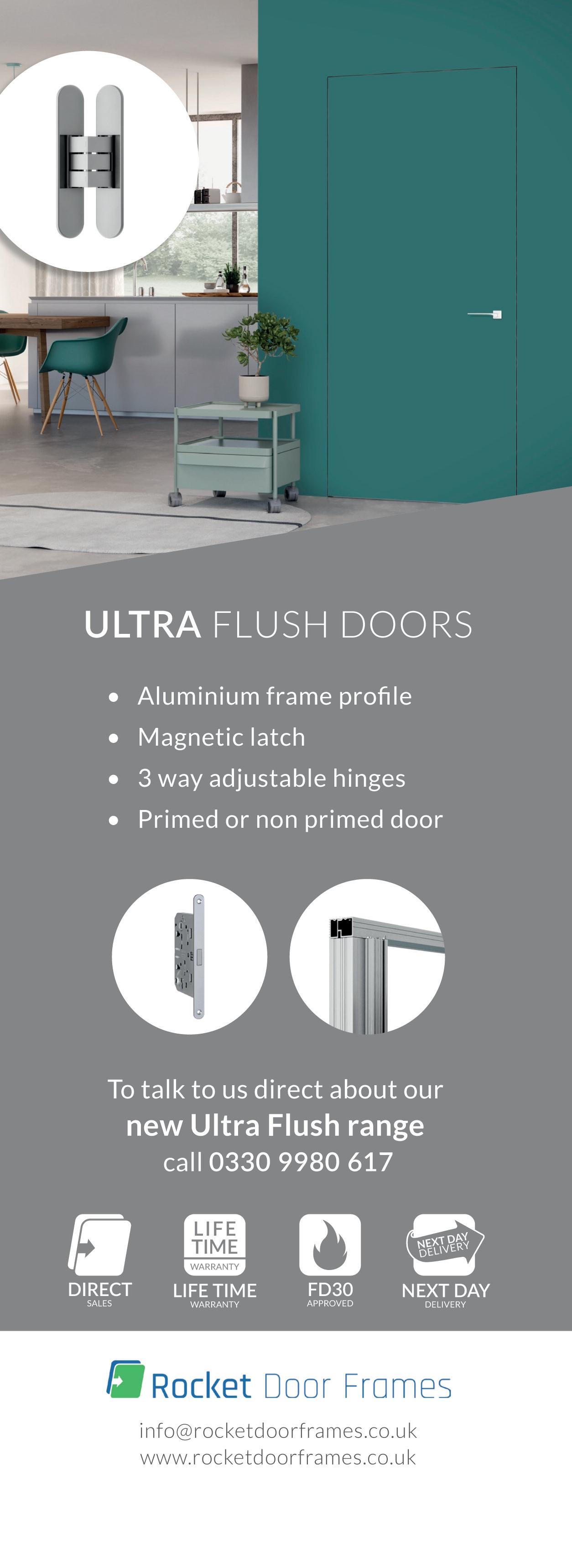
For more information on The Wildlife Trusts, go to www.rdr.link/dam006


Dara McGowan, director at Partel, looks into Passive House design and how a material-led approach using breathable membranes and vapour control layers can play a significant role in highly accurate airtight building envelopes and achieving Passive House standards.

Pathway to passive
With the UK’s daunting net zero 2050 target enshrined into law, such efforts to create practical ‘near zero energy’ houses are essential With houses accounting for 40% of energy consumed, achieving the means of constructing new passive houses affordably using solutions such as offsite timber frame and lightweight steel frame systems which can deliver the results is the realistic way forward
Faced with spiralling construction costs, off-site construction has potential to be a cost efficient and sustainable alternative to traditional methods of construction. Its benefits are well documented and while there are still barriers to its adoption, it can provide better working conditions, shorter time on site, and improved environmental performance in the construction process
A recent study from the University of Cambridge and Napier University found that factory made homes can reduce carbon emissions by up to 45% compared to traditional build It is perhaps no surprise that offsite timber and lightweight steel frame systems allow builders to achieve

the desired rigorous levels of airtightness required in Passive House construction
The importance of airtightness
Airtightness is a critical feature in Passive House, or any energy efficient home
Airtight membranes are primarily used to form the airtight barrier in passive houses and have several critical roles to play
Firstly, reduce energy demand When a building is not airtight, warm air escapes quickly and is replaced by cold air, which needs to be heated to maintain a comfortable indoor temperature
This is very energy intensive and causes occupant discomfort Secondly, minimise moisture entering the building fabric – airtight membranes are also designed to control vapour movement (i e Air and Vapour Control Layer – AVCL) By creating an airtight system, we are ensuring water vapour cannot freely move from the internal environment into the building fabric
A great deal of moisture is created in our homes from activities such as cooking, cleaning and showering so it is important that this water vapour does
S U S T A I N A B I L I T Y
3 0 April/May Professional Housebuilder & Property Developer
not enter our walls and roofs, where it will cool and possibly condense By prioritising the building fabric in this way, the passive house approach to design ensures high levels of thermal performance and superior indoor comfort.
Timber frame design
One way to achieve the Passive House standard is through offsite timber frame construction as it can provide the ideal fabric for buildings to achieve low energy demands and meet the typical U-value requirements, 0 15 W/(m²K) or below in walls for example The factory setting enables a greater control over the quality, detailing and craftmanship needed to meet these high-performance building standards It is also easier to ensure that a structure meets design specifications, and to check it for errors, when standardised and automated processes are used in a more controlled factory environment.
Offsite manufacturers have recently had to respond to the reduction in U-value targets to ensure their system is compliant with new regulations, lower airtightness targets and end user demands for more energy efficient homes In doing so, many timber frame manufacturers have reviewed their wall build ups in pursuit of an optimised solution While increasing insulation thickness is the obvious solution to lowering U-values, this is not always cost effective In addition, it increases the wall thickness which can impact footings, internal floor area and the erection processes
As an alternative, many manufacturers are exploring the use of reflective foil breather membranes and vapour control layers (VCL). When installed adjacent to a cavity, these membranes enhance the

building element U-value – they help timber frame manufacturers achieve compliance with Part L without having to increase stud depth Reflective foil membranes are designed to perform their primary function (protect against wind and rain, or control water vapour) as well as improve the heat retention of a building element
When these membranes are installed adjacent to a cavity, they enhance the resistance value (R value) of that cavity –remember, the higher the R value, the better For example, a typical 25mm unventilated air cavity would have an R value of 0 18 m2K/W (equivalent to less than 5mm of PIR insulation) while the same cavity, when adjacent to an Echofoil membrane, has an R value of 0 78 m2K/W (equivalent to more than 15mm of PIR insulation)

Steel frame systems
The fabric build-ups of steel frame systems vary much more than their timber frame counterparts Steel frame manufacturers are less likely to use reflective foil membranes, and instead opt for highspecification AVCL membranes, such as Izoperm Plus or Izoperm Plus FR, and a high-performance breather membrane
Improving the energy efficiency of our homes on our journey to net zero has never been more important Offsite methods of construction are a growing part of the market and are seen as one of the most attractive ways of delivering buildings that are high quality, sustainable and cost effective The development of breather membranes and vapour control layers which offer high performance and can meet new thermal and air permeability targets is set to revolutionise the way timber frame and light gauge steel frame structures are designed and built
WAN T TO KNOW MORE? More information on Partel’s membranes can be found at www rdr link/dam007 Profess onal Housebuilder & Property Developer April/May 3 1
Biodiversity in the built environment
Stephanie Palmer, head of sustainability, at Wienerberger explores actions that housebuilders and supply chains can take to halt and reverse biodiversity loss within the construction industry.

Biodiversity underpins ecosystem services which provide clean water, purify our air, maintain soil health, regulate the climate, recycle nutrients and provide us with food With architects, specifiers, developers and housebuilders facing greater pressure to improve biodiversity measures, what steps can the sector take?
Urbanisation and land use change by the construction sector has led to significant biodiversity loss in the UK over the last five decades 41% of species have experienced a decline in their populations, 13% are now classified as threatened and there has been a 15% decrease in average species abundance
Collective action is crucial to protect and restore biodiversity, and the housebuilding sector has an important role to play Biodiversity underpins the ecosystem services that sustain our quality of life including clean water, food, medicine and shelter

The construction industry depends heavily on building materials derived (directly or indirectly) from natural resources such as clay, limestone, timber, and sand. Material producers also use water and energy resources to manufacture products which enable us to build structures Through their purchasing decisions architects, specifiers, developers and housebuilders can help to conserve biodiversity and use these natural resources responsibly
In December 2022, a historic global agreement to halt biodiversity loss was
reached at COP15 involving 188 countries. The agreement includes a pledge to phase out or reform subsidies that harm biodiversity by at least £500bn annually and to preserve 30% of the world's terrestrial, inland water, coastal and marine ecosystems The agreement emphasised the importance of protecting biodiversity - not only for the survival of species, but also for the health and wellbeing of people and the planet
W i t h i n t h e h o u s e b u i l d i n g s e c t o r , e v e r y m e m b e r o f t h e v a l u e c h a i n c a n c o n t r i b u t e t o w a r d s h a l t i n g a n d r e v e r s i n g b i o d i v e r s i t y l o s s .
The impact of housing developments
Of course, building new housing developments can have a significant impact on biodiversity both on and off-site On-site land use changes, such as paving over greenspaces and removing top soil are visible biodiversity impacts There are off-site impacts for surrounding biodiversity too, such as species disturbance or displacement For example, noise and light pollution can disrupt feeding and breeding behaviours in adjacent habitat, and vegetation clearance may reduce natural flood defense effectiveness downstream
?
Decision-makers can take proactive measures to reduce biodiversity impacts in a variety of ways, including:

hat can architects, specifiers, developers, and housebuilders do
W
S U S T A I N A B I L I T Y
3 2 April/May Profess onal Housebuilder & Property Developer
l Applying the biodiversity mitigation hierarchy early in the project plan;
l Utilising non-toxic materials;

l Minimising waste arising from construction;
l Retaining or reinstating hedgerows instead of using fencing;
l Installing bat and bird boxes;
l Including green infrastructure such as Sustainable Drainage Systems.
Developers and housebuilders will also need to comply with Biodiversity Net Gain (BNG) requirements from November 2023, an approach to development and land management that aims to enhance the natural environment and leave it in a better state than before.

A mandatory 10% Biodiversity Net Gain requirement was introduced in the Environment Act (2021) for new developments in England, based on the Biodiversity Net Gain metric developed by Natural England.

At Wienerberger, we have a biodiversity strategy which aims to demonstrate that a minimum 10% Biodiversity Net Gain is achieved or in progress across our land assets by 2030, compared to a 2022 baseline. Although it is not a legal requirement (Biodiversity Net Gain applies to new developments only), we believe that the Biodiversity Net Gain metric is currently the best-practice method to demonstrate habitat enhancement and promote biodiversity.
Best practices to adopt
In practice, housebuilders and developers should consider the biodiversity impact of
products across the whole lifecycle: from raw material sourcing, through the benefits in use, to end-of-life stage.
To improve outcomes for biodiversity through design, we have updated our internal product development scorecards to favour product concepts that provide habitat and/or a food source for wildlife. We’ve partnered with experienced ecologists to inform product design and respond to customer needs with new products and services, including an expansion of the Eco-Habitat product range. This range includes products such as bat boxes, bug bricks and clay tiles with access for bats.
The most incredible thing about biodiversity is its resilience. Nature will gradually recover if we allow it, and this process can be accelerated with welldesigned interventions and careful attention.
COP15 placed biodiversity loss on the global agenda, and a global deal has been struck. As a result, it is now the responsibility of the entire construction industry value chain to work together and implement measures to halt the loss of biodiversity. We extend an invitation for all to join us in this effort.
WAN T TO KNOW MORE?
For more information about Wienerberger’s biodiversity strategy visit www.rdr.link/dam008
For more about its SuDS offer, go to www.rdr.link/dam009

A case for adopt ion
The Design and Construction Guidance (DCG) for sewers offered for adoption has been updated to include information about arch-shaped below-ground water attenuation chambers This will make it easier for water companies to adopt such drainage infrastructure – given that certain criteria are met
Previously, there was no reference to arch-shaped attenuation structures in the DCG which has meant that it has been more difficult for water companies to adopt them That all changes with the addition of this extra section.



The DCG first came into force on April 1st 2020, replacing the long-standing Sewers for Adoption guidance. Developers who design and install sewerage systems in line with the DCG can expect to have their systems adopted by their local water companies – although it should be noted that water companies must be involved at the earliest stages of design and specification to ensure that local requirements and nuances are met.
One of the notable things about the DCG is that it includes information on sustainable drainage systems (SuDS) and that the definition of a sewer has been broadened to include certain SuDS components This means that water companies in England can adopt SuDS components which are mentioned in the DCG under Section 104 of the Water Industry Act 1991 in the same way
Version 2 2 of the DCG, dated 29 June 2022 and first available through the Water UK website in November last year, means that arch-shaped attenuation structures have now been added to the adoptable SuDS family

:
“d) where half pipe or arch structures are proposed, the design must (in addition to the above) demonstrate how the system can be cleaned/jetted and done so without damage or erosion of base materials or membrane Further design evidence should outline how, in areas of a high-water table, groundwater is kept out of the system and, when positioned under highways, that the loading criteria is acceptable to both undertaker and adopting Highway Authority (if applicable) ”
Any changes to the DCG must first be assessed and accepted by the Independent Sewerage Adoption Panel, which is made up of representatives from water companies and developers and then a recommendation made to Ofwat for their approval.
The inclusion of arch-shaped structures, such as ADS’s StormTech, has been initially well-received by water companies – and paves the way for developers to offer them without having to do additional work to prove their suitability
WAN T TO KNOW MORE?
For more information on arch-shaped structures and Advanced Drainage Systems, go to www rdr link/dam010
T h e r e l e v a n t i n f o r m a t i o n c a n b e f o u n d i n s e c t i o n C 7 8 o f t h e d o c u m e n t w h i c h c o v e r s t a n k s , i n c l a u s e C 7 8 4 d w h i c h s a y s
With Schedule 3 still over the horizon (if it happens at all), the Design and Construction Guidance for adoptable sewers still represents best practice. And recent changes give the green light to arch-shaped attenuation chambers.
Professiona Housebuilder & Property Developer April/May 35 G R O U N D W O R K S & D R A I N A G E
Stuart Crisp, UK manager of Advanced Drainage Systems (ADS), reports.

Block vote
Drainage legislation coming into force early next year might be sending some developers into a tailspin Schedule 3 of the Flood and Water Management Act is due to be implemented in England in early 2024, meaning that all new developments will need to include Sustainable Drainage (or SuDS) features as part of their water management masterplan The intention of this legislation is to ensure that new developments don’t increase local flood risk by generating higher volumes of surface water runoff
SuDS, in principle at least, are delightfully uncomplicated The concept is to collect and manage water on the surface (or as near to the surface as possible), slowing its flow and limiting the volume that heads into receiving water courses.
In an ideal situation, over time, stored water can soak down into the ground at source without ever needing to meet a sewer or stormwater drain – but even when that’s not possible, these features sufficiently slow the flow of water downstream which means that the receiving water course isn’t overburdened and flood risk is drastically reduced In addition, water that flows through these features is cleansed, improving the quality of runoff that will have collected a variety of pollutants on its route downstream
But clearly, not all developments have the space to hand over to SuDS features
Land is expensive, so how can you satisfy SuDS legislation without giving up valuable space?
Permeable paving is the ideal solution It provides a durable, hardwearing, loadbearing surface that’s ideal for access roads, car parks and driveways, but due to its clever design, it also collects and stores rainwater at source – so shrewd designers can marry hardstanding and excellent SuDS performance in one simple system

The system comprises of concrete block paving which features special spacer nibs around the edge of each block Although the concrete itself isn’t permeable (the blocks are made from the same material as any other concrete block paving) the joints around the edge of the block keep the individual units a few millimetres away from each other, creating a uniform gap at every joint that allows surface water to flow cleanly though
The blocks are laid on a specially prepared sub-base composed of different grades of angular crushed rock which provides both excellent storage for the water that flows into it, and also excellent structural performance Once stored in the sub-base, water either soaks naturally into the ground at source or (where infiltration isn’t possible) is channelled away at a controlled rate to a receiving water course
This means that all of the rain that falls onto a permeable surface can be intercepted and stored where it falls
G R O U N D W O R K S & D R A I N A G E
Chris Griffiths, head of product sustainability, at Marshalls looks at how permeable paving makes a useful contribution to residential water management.
Professiona Housebuilder & Property Developer April/May 37

Often, roof runoff is also directed into the sub-base of a permeable pavement too, via downpipes. This means that a permeable paving system effectively becomes a large-volume, structurally robust storage tank beneath a completely porous trafficable surface.

While it’s true that a permeable pavement system doesn’t satisfy all four pillars of SuDS, it’s an excellent solution for dealing with high volumes of runoff –although even the most optimistic manufacturer would struggle to claim that it provides biodiversity or amenity benefits.
However, studies have proved that water that flows through a permeable pavement undergoes significant cleansing (by a combination of mechanical filtration and biological activity) – so enlightened designers recognise that the controlled flow of clean water leaving a permeable sub-base can be used to successfully irrigate a soft planted area of landscaping. Thus, even when infiltration systems aren’t possible, permeable paving becomes a
pragmatic and sensible element of a holistic water management system.
So while permeable paving isn’t a water management panacea, it’s one of the most pragmatic, simple and costeffective solutions to help developers satisfy incoming SuDS requirements.

WAN T TO KNOW MORE? For more information on Marshalls’s permeable paving, visit www.rdr.link/dam011 GROUNDWORKS & DRAINAGE
Three is the magic number
Martin Lambley, product manager for urban climate resilience, northwest Europe, UK and Ireland at Wavin, explains how developers and housebuilders can ensure their business thrives when Schedule 3 arrives.
Sustainable drainage systems (SuDS) are set to become an even more integral part of all new developments in England Following a review of SuDS by the Department for Environment, Food and Rural Affairs (DEFRA), the Government has decided to commence Schedule 3 of the Flood and Water Management Act 2010, which will establish a national standard for sustainable drainage in new developments
The upcoming regulations are undoubtedly the change we need to ensure communities are more resilient to wetter winters, but for developers and housebuilders, mandatory sustainable drainage requirements are another thing to think about on already complex projects



So, before the legislation kicks in in 2024, it’s important that they understand what it means for their projects

Schedule 3 is a phase of the Water Management Act 2010, but it wasn’t implemented with the rest of the legislation through fear that it would put the brakes on much needed growth in housebuilding However, since then SuDS have grown more effective and easier to implement Couple this with an ever more urgent need for robust solutions in urban water management, and legislators have decided that the stick will be more useful than the
carrot in driving the necessary change
In practice, Schedule 3 is likely to require a development to submit a drainage plan to local authorities for approval before it can connect to a public sewer system This plan will have to contain high-quality SuDS, of which the exact requirements are yet to be defined However, when Schedule 3 emerges in its final form, the legislation puts the emphasis on developers to become fluent in SuDS if they want to see their projects progress
Sussing out SuDS
One important aspect of Schedule 3 is that SuDS are set to be a crucial part of the planning stage of developments, and a project-critical one at that. It brings that deadline significantly closer for developers and housebuilders, so it’s important that they start familiarising themselves with the solutions available on the market now
SuDS are designed to change our relationship with water and re-establish an urban water cycle that works better with the natural cycle that the built environment disrupts The most comprehensive approach to SuDS is therefore one that bridges natural solutions, such as ponds, soakaways and swales, and artificial interventions such as attenuation tanks Different systems will
G R O U N D W O R K S & D R A I N A G E
40 April/May Professional Housebui der & Property Deve oper


be right for projects of varying sizes, types, and flood risks. So, developers should be ready to be flexible and take an integrated approach and find the right SuDS option for each individual project.



Actually building it
SuDS are another component of already complex construction projects, and an addition to crowded work sites, particularly those in cities where space comes at a premium. The implications for site safety, and keeping projects on time and on budget, have the potential to be a headache for construction managers. Underground systems that are cumbersome to install pose a risk to employees and have the potential to delay the rest of the build.

It's for this reason that developers should ensure installation for SuDS is a priority right from the design and specification stages. In fact, significant progress has been made in the way SuDS products are designed in recent years, allowing installation to be easier than ever, and it’s possible that this has contributed to policymakers deciding that the time is now for Schedule 3
Despite this progress, SuDS still pose an upfront investment. However, the new mandate is an opportunity for developers to introduce their customers to SuDS, who for the most part won’t have encountered them before, offering the chance for them to become a desired element of a development. SuDS offer a reassurance to homeowners in particular, and knowing the value these systems have when property is faced with flooding, can make the world of difference.
Ultimately, this is a chance for developers to get ahead of the game –the legislation will surely make a splash when it comes into force in 2024, and foreknowledge of the incoming regulations, and the relevant solutions they address, is crucial for those looking to appeal to buyers on the hunt for an asset which will hold its value in a future defined by a changing climate.
WAN T TO KNOW MORE?
For more information Wavin’s SuDS, please visit www.rdr.link/dam012
42 April/May Professional Housebuilder & Property Developer

A mini adventure
PHPD takes a look at the current and most recent crop of mini-excavators from some of the sector’s biggest names.

DOOSAN BOBCAT E19e for quiet sites
Ideal for jobs where noise is an issue, the electric version of Bobcat’s E19 diesel-engine model, the E19e, provides comparable performance yet is far more quiet – only 70 dBA – and has zero emissions Its 3 5-hour battery capacity and super-fast charger enables it to work all day on most jobs so long as the power is topped up during work breaks Only 98cms wide, the E19e fits in the most confined of spaces and yet has a comfortable cab with decent legroom because the travel pedals can be folded and the AUX1 and boomswing functions are controlled by thumb controls rather than pedals
For more information, please go to www.rdr.link/dam013
CASE CONSTRUCTION EQUIPMENT
Six in C
CASE Construction Equipment has six models in its C Series mini excavator line ranging from 1 7 to 6 0 tons Safety features include ROPS, TOPS and FOPS compliance, emergency stop switch, travel alarm and object handling kit The safety valves prevent loads from slipping in case of hose failure. The pilot system with accumulator enables the operator to put the attachment down safely even when the engine is off The CX17C and CX18C feature hydraulically retractable tracks with inner routing of hydraulic hoses When the tracks are retracted, the machines are less than one metre wide The CX26C (2 6 tons) and CX37C (3 7 tons) are available with a choice of long and short arms, which deliver a maximum dig depth of 2,645 and 2,420mm respectively for the CX26C, and 3,440 and 3,135mm respectively for the CX37C. The CX57C (5.7 tons) and CX60C (6 0 tons) put the operator first, equipping the cab with ergonomic seating and control layouts, fully adjustable, heated seats, multiple storage compartments and sunshades
For more information, please go to www.rdr.link/dam014
HITACHI CONSTRUCTION MACHINERY Wired for continuous operation
The Hitachi ZX23U-6EB operates on 18kWh lithium-ion batteries or wired power, enabling continuous operation 24 hour operation – which are more feasible because it is far quieter than comparable conventional machines, it has an operating weight of 2,300 kg and is powered by a 10 kW motor rated at 2000 min-1. Features include proportional joystick controls, quick-coupler piping, and safety valves on boom, arm and dozer blade cylinders Contractors can expect reduced maintenance requirements and downtime compared to dieselpowered machines Measuring just 3 8m long and 1 4m wide, the ZX23U-6EB is easy to transport between job sites, making it a versatile addition to rental fleets.
For more information, please go to www.rdr.link/dam016
DOOSAN
Doosan’s DX85R-7
cuts tail swing
Doosan’s latest 8 tonne mini-excavator, the DX85R-7, has a reduced tail swing (RTS) design and boom swing angle of 60o so it can work effectively in confined spaces It is powered by the Doosan D24 Stage V diesel engine, providing 48 5 kW of power at 2100rpm The bucket digging force of the DX85R-7 is 6 7 tonne and this is combined with a traction force of 6 6 tonne, whilst travel speeds are 2 9 km/h in the low range and 4 8 km/h in the high range The excavator is fitted with a newly-designed main control valve that cuts energy wastage and pressure losses by more than 40%



For more information, please go to www.rdr.link/dam015
KOMATSU EUROPE
Komatsu’s Smooth operator
The PC17R-5 conventional tail mini excavator from Komatsu

Europe has an operating weight of only 1,755-1,835 tonnes while its EU Stage V engine develops
11 8/15 8 kW/HP Its spacious cabin provides maximum operator comfort and short pitch rubber shoes smooth out travel on any surface Safety features include double lock function for PPC, engine shut down secondary switch, seat belt caution indicator, tie down points on the revo frame, and lifting points on the cab
For more information, please go to www.rdr.link/dam017
G R O U N D W O R K S & D R A I N A G E
44 April/May Professional Housebuilder & Property Developer
HITACHI CONSTRUCTION MACHINERY Manoeuvrable and cordless
Hitachi Construction Machinery's ZX55U-6EB is an electric five-tonne excavator that can be cordless, using 39kWh lithium-ion batteries, or wired so it can work while charging from a CEE 400VAC 3-phase power source. It is exceptionally manoeuvrable thanks to its short tail swing of 1 1m cordless or 1 8 meters when wired Owners of the ZX55U-6EB can expect reduced maintenance costs and downtime compared to diesel-powered excavators, says Hitachi The electric drive system's status, including battery level and motor load factor, can be remotely monitored while a rear camera monitors the cable during wired operation to ensure it is secure The machine's reduced external sound levels of 91dB should extend working times and possible locations
For more information, please go to www.rdr.link/dam018
HYUNDAI CONSTRUCTION EQUIPMENT Range improves hydraulics

The A-Series range of EU Stage mini excavators V from Hyundai Construction Equipment have an operating weight range of 1 7 to 5 5-tonnes and are designed to provide enhanced operator comfort, lower emissions, and improved hydraulic capabilities Models over 4 tonnes are equipped with a load-sensing hydraulic system, while all models have proportional joystick controls, quick-coupler piping, and safety valves on boom, arm, and dozer blade cylinders To ensure safe operation, the excavators have safety valves on the main boom, dipper arm, and dozer blade hydraulic cylinders The cab is large and quiet, and models above 3 5-tonnes have a tilting cab to provide service access The HX10A and HX19A models feature an extendable undercarriage and dozer blade for increased stability during heavy digging and lifting Some models have heavier counterweights, and optional angled blades are available on models above the HX35A Z. The excavators come with both long and short dipper arms. A rearview camera is available as an option on excavators with an operating weight over 4-tonnes
For more information, please go to www.rdr.link/dam019
TAKEUCHI
More short tails for Takeuchi
Weighing 3 8-tonnes, the Takeuchi TB335R short tail excavator is Stage V ready with 18 2kW and an ecooperating mode Its larger than average track frame and optimized counterweight provides excellent stability and just 75mm maximum track overhang



Designed for all day operation, the TB335R’s cab is equipped with a high back suspension seat and good foot room plus climate control, DAB radio, microphone socket, Bluetooth, and a 12V charging socket For safety, the excavator has LED work lights – front, back and internal – and the blind-side window is larger and lower for maximum dig and slew area visibility Holding check valves are fitted as standard along with audible warning lift alarm
For more information, please go to www.rdr.link/dam020
JCB
Self-checking keeps 36C-1 in working order
The JCB 36C-1 is equipped with a Perkins 18 4kw Stage V engine and an electronically controlled pump, making it ideal for even the toughest jobs With an operating weight of 3,759 kg and a maximum dig depth of 3.48 m, it provides exceptional productivity, with bucket tearout forces of up to 32 0kN and fast cycle times The machine health-check system ensures that it is always in excellent working order, and the fully adjustable suspension seating offers operator comfort throughout the day Its long greasing intervals of 500 hours reduce downtime, thanks to graphite impregnated bronze bushes Load sensing hydraulics conserve fuel by consuming power only where it's needed. Additionally, it has programmable auto-idle and four different engine modes that further reduce fuel consumption The machine's easy-to-clean sloping H-frame undercarriage ensures quick turnaround

For more information, please go to www.rdr.link/dam021
YANMAR
Skinny and light for easy towing
Only 98cms wide and weighing just 2 3 tonnes, Yanmar’s SV15 mini crawler excavator can be easily towed between work sites, along with buckets and a light work tool, on a standard 2.5 tons GVW trailer. It has a digging force of 7.4/12.9kN (short arm/bucket), a traction force of 13 3/8kN (first/second speed) and two travelling speeds – either 1 9 or 3 7km/h The SV15 features a double gear pump hydraulic system, with 28 l/min and 205 bars maximum flow and pressure The machine comes fitted with a standard auxiliary hydraulic line to power breakers or augers, delivering a flow of 29 l/min at a pressure of 120 bar
For more information, please go to www.rdr.link/dam022
Professional Housebuilder & Property Developer April/May 45
BC DESIGNS On a roll
Ideal for both contemporary and period-style bathrooms, the Verdicio bath by BC Designs is a modern version of the traditional roll-top bath Measuring 1 68m, it fits comfortably in most bathrooms and offers a spacious 180-litre water capacity for a relaxing soak Made from BC Designs' patented Cian material, it is highly durable, resistant to stains and scratches, and easy to clean Cian's natural mineral compounds keep the bath warm to the touch and retain heat for longer, according to the company The Verdicio comes in silk matt white, polished white, or ColourKast finishes such as Rose Pink and Khaki Green

For more information, please go to www.rdr.link/dam023
CRL
Keep it sleek
Products from CRL, such as Serenity sliding shower door system, are designed to be minimalist in appearance and low maintenance in practice. Available in on-trend finishes such as matte black and brushed stainless steel, the door has little hardware and so has a frameless appearance CRL also provides a range of shower hardware for hinged door and fixed panel options, including glass clamps that provide a clean-looking alternative to U-channels, and a square support bar These can be specified with square cornered and bevelled edge hinges that can be exactly matched, in a variety of finishes, including chrome and matte black For more information, please go to www.rdr.link/dam024

CRL STONE Tough terrazzo
Suitable for either kitchen island, worktop or splashback, the Venetian Grande countertop from CRL Stone is a terrazzo quartz surface that can be combined with light woods, brushed metals, and soft pastel colours Highly resistant to knocks and impacts, CRL Quartz is heat, scratch and stain resistant, and no extra care or special products are needed to clean it Stains can be removed with water or mild cleaning products and, because it is a non-porous surface, it prevents the build-up of bacteria or mould, making this a hygienic, easy to maintain surface. For more information, please go to www.rdr.link/dam025

MOORES
PHJ Plant room
PHJ’s Bathrooms to Love brand is introducing a bathroom suite, the Lily, that is intended for fitted bathrooms. Its semirecessed basin measures 555mm (W) x 435mm (D), and there are also various WC options available These include closecoupled fully shrouded, close-coupled open back, back-to-wall, and wall-hung models All WC options come with softclose seats and rimless designs as standard Among the coordinated accessories are overflow basin rings, dual flush buttons, and seat hinge caps, all in brushed brass and matt black finishes

For more information, please go to www.rdr.link/dam026
DEVA BY METHVEN Tap regatta
Featuring a sleek, chrome finish with stylish curves and a smooth flat surface, the Henley collection of bathroom tap ware from Deva by Methven, includes a basin mixer, bath shower mixer, and bath filler To save water, the Henley basin mixer has a 4l/min flow regulator and is suitable for high pressure systems, while the bath shower mixer and bath filler are compatible with all plumbing systems The basin mixer also features an easy-to-use lever handle to operate both the temperature and flow control and has a press top waste. All items come with a 12year warranty

For more information, please go to www.rdr.link/dam027
Reed Green for country house chic
Moores has added Reed Green, a soft mix of sage and olive reminiscent of the heritage palette of colours, to its Kensington kitchen collection. The company says this colour works well with a range of kitchen sizes and styles, from large traditional country kitchens to smaller spaces It embodies the classic country style, while catering to the needs of busy households with various cabinet and storage options, modern handles, and stylish worktops
For more information, please go to www.rdr.link/dam028

K I T C H E N S & B A T H R O O M S
46 April/May Profess onal Housebuilder & Property Developer
HANSGROHE GROUP
Hansgrohe opts for lower case
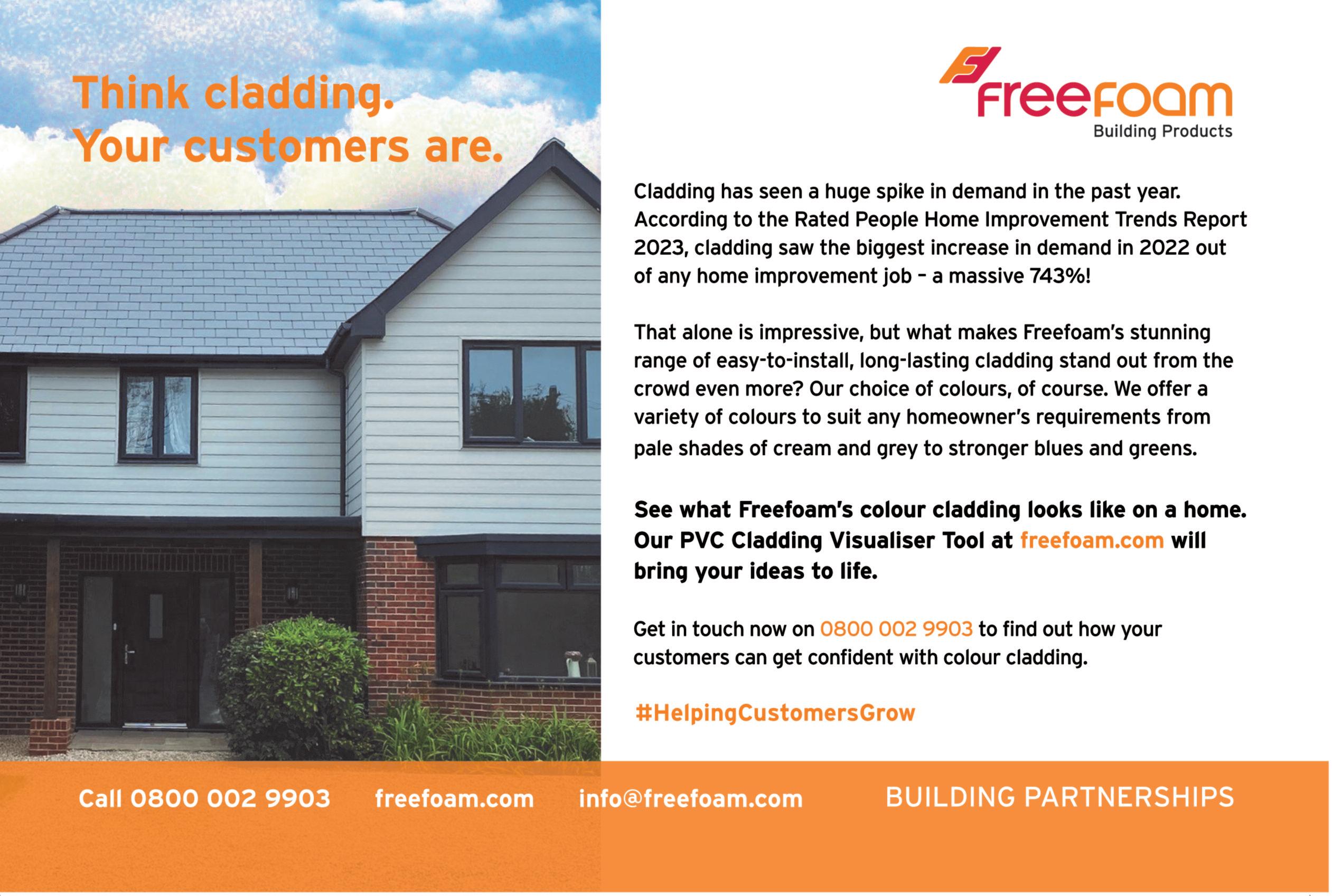
Hansgrohe Group is merging all its bathroom products into a shared design under the premium brand hansgrohe, so consumers may can easily mix and match basins, toilets, bathroom furniture and mirrors with basin mixers, shower systems, drains and accessories
The Xuniva washbasins, for example, come in different shapes and installation options, making them easy to pair with any hansgrohe mixer tap line The Xarita mirror range also offers a variety of functions, such as dimming, memory, and automatic switch-off, as well as mirror heating and energy-saving LED technology Additionally, the EluPura toilet range features two design variations and an optimised interior geometry that uses just 4 5 litres per flush The HygieneEffect glaze and rimless design also make cleaning easier and prevents bacteria Designers can use the hansgrohe Inspirator tool to compare the various options for any bathroom
For more information, please go to www.rdr.link/dam029
ABODE Old brass
Abode has added a wall-mounted basin mixer in Antique Brass to its Kite Bathroom Collection The two-hole wall-mounted model has diamond embossed handles, like the rest of the collection, and has a warranty for five years

It measures 240mm x 65mm with a spout reach of 175-210mm
For more information, please go to www.rdr.link/dam030
LAUFEN Palette of furniture
Designed to complement Laufen sanitaryware, the Lani range of bathroom furniture comprises handle-less wall-hung vanity units, wall cabinets, tall cupboards, and mirror cabinets Features include recessed handles, soft-close doors and drawers, safety glass shelving and compartmentalised storage within the drawers. It comes in a wide range of finishes, including a standard palette of Matt and Glossy White, Traffic Grey, and Wild Oak, as well as three striking metallic finishes (Gold, Copper, and Titanium)

Additionally, there are 37 matt colours available ranging from Sage Green and Smokey Blue to Antique Pink and Ochre Brown For more information, please go to www.rdr.link/dam031








R E G I S T E R F O R F R E E AT W W W. T O O L FA I R . I N F O T H E R E G I O N A L S H O W S F O R B U I L D I N G P R O F E S S I O N A L S COVERING ALL ASPECTS FROM BUILDING, HEATING, PLUMBING AND ELECTRICAL SERVICES ● FREE CPD SEMINARS ON LOW CARBON HEATING, BUILDING LEGISLATION AND EV CHARGING ● FREE ENTRY ● FREE PARKING FO RT H C O M I N G S H O W S : ELEX 2023 PROFESSIONAL ELECTRICIAN The Electricians’ Exhibition Sponsored by Professional LIVE! TOOLFAIR CBS ARENA COVENTRY CBS ARENA COVENTRY 14TH & 15TH SEPTEMBER 2023 WESTPOINT EXETER WESTPOINT EXETER 27TH & 28TH SEPTEMBER 2023 SANDOWN PARK SURREY SANDOWN PARK SURREY 2ND & 3RD NOVEMBER 2023
ACTIS To L and back
Insulation specialists Actis have developed a RIBA-approved CPD to help architects and builders change their working practices to meet Part L revisions
The free one-hour Tomorrow's Insulation Solutions for Future Homes Standards CPD module gives guidance on how to meet the revised energy efficiency targets that mean new build homes must reduce carbon emissions by 31% over previous levels

The Actis CPD, which has also been certified by the Construction CPD Certification Service, will look at different tactics to help achieve the greater goal of building Net Zero by 2050, such as the increased importance of having a ‘fabric first' approach
For more information please go to www.rdr.link/dam032
CR LAURENCE
Man the balustrades
Installing frameless and handrail free glass balustrades – the fashionable choice for exterior projects – can be achieved safely and simply using the CRL Posiglaze system
This is a fully adjustable glass balustrade system that employs a clamping design and a quick and easy adjustable method to align glass panels without using a handrail – even on an uneven surface

Installation is simple; fit the base channel to the substructure, clip the glass side clamps to the bottom edge of the glass panel, position the glass in the channel and then attach the cover strip and bead gasket
Constructed from extruded aluminium, the system is light yet strong, making delivery, fitting and maintenance easier while ensuring end user safety
Suitable for many applications from residential to commercial settings, the system is engineered to accommodate both 12 mm to 21 52mm glass
For more information please go to www.rdr.link/dam033
DOMUS VENTILATION
Heat and ventilation for the larger home
HRXE-ZEUS is a mechanical ventilation with heat recovery (MVHR) unit from Domus that enables large residential properties to comply with Building Regulations Part F by boosting the air flow to the level required
It combines both supply and extract ventilation in a single unit, utilising an advanced heat exchanger to recover up to 95% of the heat that is typically lost in stale air. The fresh air drawn into the building is then heated, filtered and distributed to living rooms and bedrooms. The system features two independent fans that offer full-speed control for background and boost ventilation rates.

It is equipped with a 100% thermal bypass that stops properties overheating by directing fresh air into the building without heating it through the exchanger. For more information please go to www.rdr.link/dam034
HOWDENS Plank and tile
Oake & Gray – the latest brand of rigid vinyl flooring from Howdens –brings the aesthetic appearance of natural materials to those on a budget

Oake & Gray flooring comes in real wood-effect and stone-effect designs and can be installed using an innovative 'Quick Click' system that does not need glue It also has an integrated underlay and can be installed over existing hard flooring, saving time and money during installation
Made from 70% limestone, Oake & Gray flooring is a reduced-plastic market alternative that is hardwearing, dent, scuff, and stain-resistant, and 100% waterproof once installed and sealed. It is available in four formats: standard planks, XL planks, herringbone, and tiles
For more information please go to www.rdr.link/dam035
BOBCAT Compact tractors
Bobcat is introducing three compact tractor platforms – the 1000, 2000 and 4000 series – that amount to nine new models with power ranges from 25 to 58 HP Each of the nine models in the Bobcat compact tractor range comes with four-wheel drive, air conditioning (cab models), a suspended seat, an adjustable steering wheel, linked pedal and ergonomic controls – plus a 24month, 2000-hour warranty
Options include manual or hydrostatic transmissions: three-point hitch with telescopic or quick lower links and open canopies (ROPS) and cabs
Together the nine models can be configured to meet many applications They can be equipped with front, mid and rear connections and power take-offs (PTO) Features include an independent PTO, auto-PTO; PTO Cruise, HST Cruise or Draft control ensuring optimum productivity and uptime
The Bob-Tach system comes as standard on all machines with the front-end loader option, enabling users to switch easily between different Bobcat attachments to carry out multiple jobs easily.
Fuel consumption is kept to a minimum by the Eco PTO feature, while the linked pedal ensures optimum driving performance from the efficient 3-cylinder engine. For more information please go to www.rdr.link/dam036

G E N E R A L B U I L D I N G
Professional Housebuilder & Property Developer April/May 49
SMART ARCHITECTURAL ALUMINIUM Front to back
The Signature Door range from Smart Architectural Aluminium offers a fresh selection of entrance and back doors, complementing the well-established Designer Door range The latter has also been updated with the introduction of a new double door option, thereby expanding the appeal of these doors with their superior quality and high level of security to an even wider audience For more information please go to www.rdr.link/dam037

SNICKERS WORKWEAR Get
into your strides
Tough but comfortable, the latest work trousers from Snickers Workwear are made from Sorona performance fabric which offers exceptional softness and stretchability for maximum comfort

The fabric is also quick-drying, breathable and soft to the touch for optimal performance that will last through wash after wash, retaining shape, comfort and protection throughout the life of the garments
These slim-fit Trousers are Class 1 and Class 2 certified and come with the patented KneeGuard system and Cordura reinforcement in the knees and pockets
The impact-resistant Dura range comes in two variations: an IP65 IK10 LED bollard in moulded, toughened polycarbonate or a robust IP65 IK08 wall light, both available in black with adjustable CCTs in warm white, cool white, and daylight For more information please go to www.rdr.link/dam038
KAWNEER Steel style
Designed to look like a steel window, the GT70S from Kawneer is a dual colour aluminium window that combines the technical performance of today’s aluminium windows with the fine sightline characteristics of original steel windows.
It is an open-in window that can be used for composite and ribbon windows and offers a range of structural and coupling mullions and a glazing infill up to 64mm for greater design and performance variation

PAS 24 accredited, the GT70S also provides a high level of security Open in, side hung, and bottom hung window variations are all available
For more information please go to www.rdr.link/dam039
KNIGHTSBRIDGE Nifty shades of grey
With matt black finishes on electrical accessories becoming increasingly popular in domestic and commercial installations, Knightsbridge – one of the UK’s leading manufacturers of wiring accessories and lighting – is offering a wider range of darker shades with Anthracite and Smoked Bronze across all its wiring devices

Anthracite’s contemporary versatility lends itself to anything from window systems through to radiators and now switches and sockets With a warm base tone, earthy feel and submetallic lustre, it is a striking finish that can either blend seamlessly with its surroundings or stand out against contrasting interiors Smoked Bronze is a patinated light grey with a warm bronze undertone, it has a discreet brushed finish that avoids the severity of the darker shades
To complement them, a curated collection of lighting accessories is also finished in both Anthracite and Smoked Bronze, including ceiling pendants, and LED wall lights, including up/ down options For more information please go to www.rdr.link/dam040
A Proctor Group Ltd page 17
www rdr link/DAM100
Bond It page 41
www rdr link/DAM101
Brett Martin Ltd page 23
www rdr link/DAM102
CorkSol UK page 20
www rdr link/DAM103
Energy Saving Innovative Controls Ltd page 33
www rdr link/DAM104
Freefoam Building Products page 47
www rdr link/DAM105
H+H UK Ltd page 43
www rdr link/DAM106
Indigo Group page 39
www rdr link/DAM107
Kingspan Insulation page 13
www rdr link/DAM108
Kubota (U K ) Ltd page 34
www rdr link/DAM109
Lakes Bathrooms Ltd page 4
www rdr link/DAM110
Off Plan Lease Plans page 9
www rdr link/DAM111
Quickslide Ltd outside back cover
www rdr link/DAM112
Resapol Ltd page 41
www rdr link/DAM113
Rocket Door Frames page 27
www rdr link/DAM114
Rocket Door Frames page 29
www rdr link/DAM115
ROCKWOOL Ltd page 38
www rdr link/DAM116
Saniflo Ltd page 36
www rdr link/DAM117
Superglass Insulation Ltd inside front cover
www rdr link/DAM118
Tarmac pages 24,25
www rdr link/DAM119
TOOLFAIR page 48
www rdr link/DAM120
Wavin page 11
www rdr link/DAM121
West Fraser page 15
www rdr link/DAM122
G E N E R A L B U I L D I N G 50 April/May Professional Housebu lder & Property Deve oper
A D V E R T I S E M E N T I N D E X
The Inside View: The decline of dining
Rightmove findings indicate the dining room has been steadily declining in popularity over the past decade, with mentions in property adverts in the last year decreasing by 28%.
While many of us may still use this room for Christmas dinner, this is likely to be the only time of the year it serves its original purpose, begging the question do modern homeowners need a formal dining room?
Steve Hird, director at interior design specialists, Edward Thomas Interiors offers his insight.

Aformal dining room was once considered an indication of wealth and prosperity with the table itself a status symbol; it was to be treated with respect, “kept for best” and protected at all costs As the popularity of kitchens increased, alongside the rise of the TV dinner, the dining room has become almost obsolete, used once, maybe twice a year And with the pandemic meaning space within the home is at a premium, it’s not sustainable to maintain rooms purely for decoration
Modern living requires multi-purpose space where personal and professional personas blend seamlessly, and the family has room to grow Our design briefs are focused on maximising square footage and styling rooms to avoid convention A dining room is a luxury now, we’re probably only installing these as a formal space on 15% of our show homes Instead, it’s important to encourage homeowners not to be afraid of changing rooms to suit lifestyle and illustrate alternative options
Our top five uses for a dining room are:
1. Office/ study/ library: certainly the most common purpose since Covid. Without a table dominating the room, you can create workspaces for two adults, or a parent and child. Floor-to-ceiling cabinetry makes an impressive backdrop, and adds all-important storage space to hide equipment, cables and filing too
2. Cinema/ gaming room: a dedicated space for families to watch films, stream series or compete in Virtual Reality, these can be a cosy alternative to the open plan kitchen/family room, or formal living room
3. Playroom : half-height furniture and storage helps children learn and play or invite friends over when it’s a grey, rainy day and outdoors isn’t an option.
4 Craft or hobby room: a craft room can be a real incentive for those that have always wanted to take up a new hobby but never had the space, Amateur sewers, painters or musicians could learn new skills, or those wanting to read or practice yoga could create a quiet spot
5 Downstairs bedroom: as family living evolves, and we embrace multigenerational homes, re-purposing a dining room as a bedroom is ideal for a student returning from university or an elderly relative.


While it’s true the dining room is in decline, dining together is as important as ever so a home still needs space for the family to enjoy a meal New homes are now designed to accommodate dining as part of the kitchen/breakfast room Here is where we’ll typically add a table and chairs, bench seating, or a combination depending on the space and overall style, both formal and informal arrangements are still requested Also popular as part of this open plan design are French or bifold doors, meaning the garden becomes an extension of the home so another option is to add bistro tables or outdoor seating
WAN T TO KNOW MORE?
For more information go to www.rdr.link/dam041
L A S T W O R D
Professional Housebuilder & Property Developer April/May 51






























































































































































































